EP 9: Sherry Ellis Allegations - Wrap-Up
HAVE A COMMENT, QUESTION, CONCERN OR JUST A SHOUTOUT? CALL AND LEAVE A MESSAGE ON OUR PODCAST HOTLINE. YOU MAY HAVE YOUR MESSAGE INCLUDED IN AN UPCOMING EPISODE OR SHARED VIA SOCIAL MEDIA….. (405) 466-5622
Official Police Reports (redacted) Below:
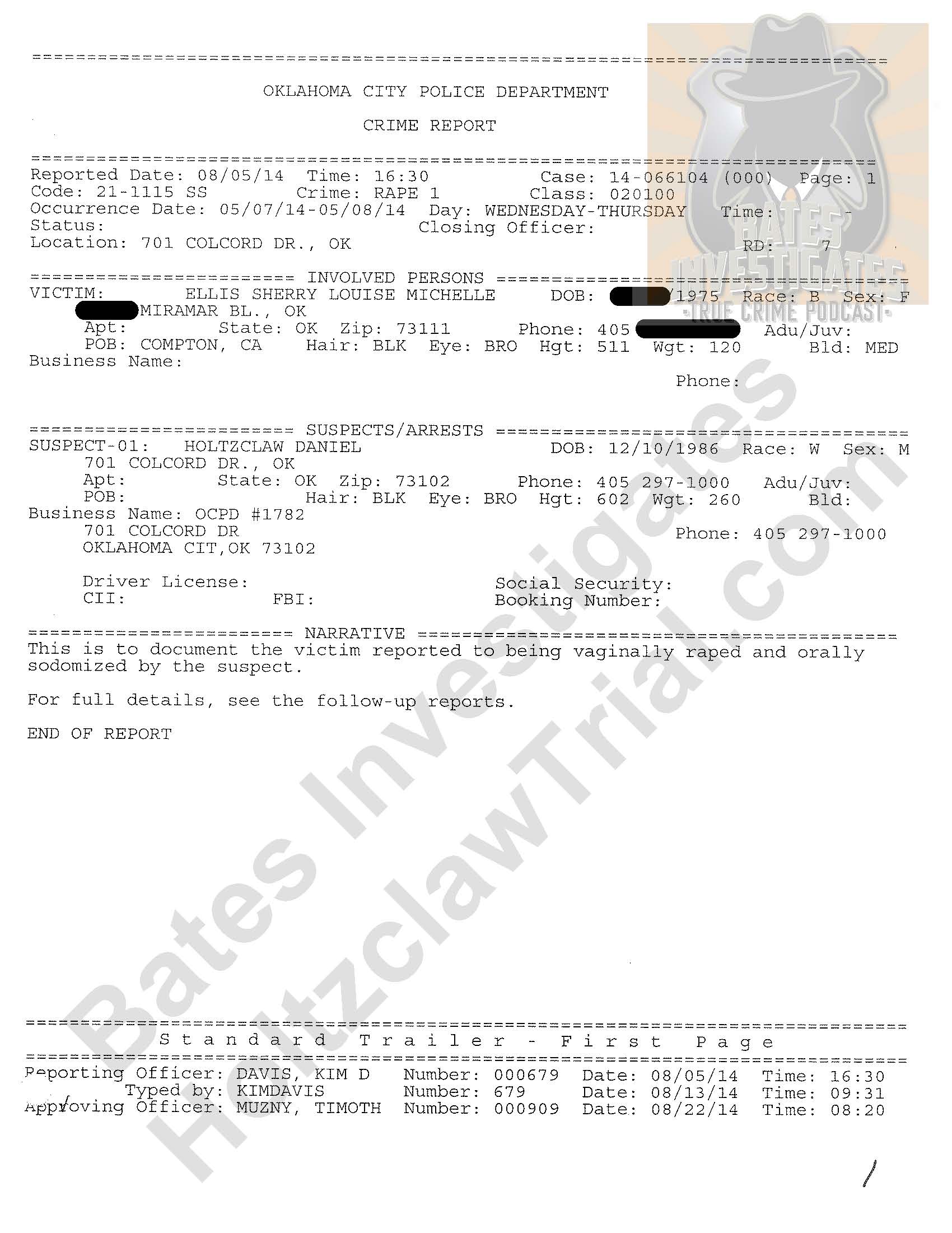
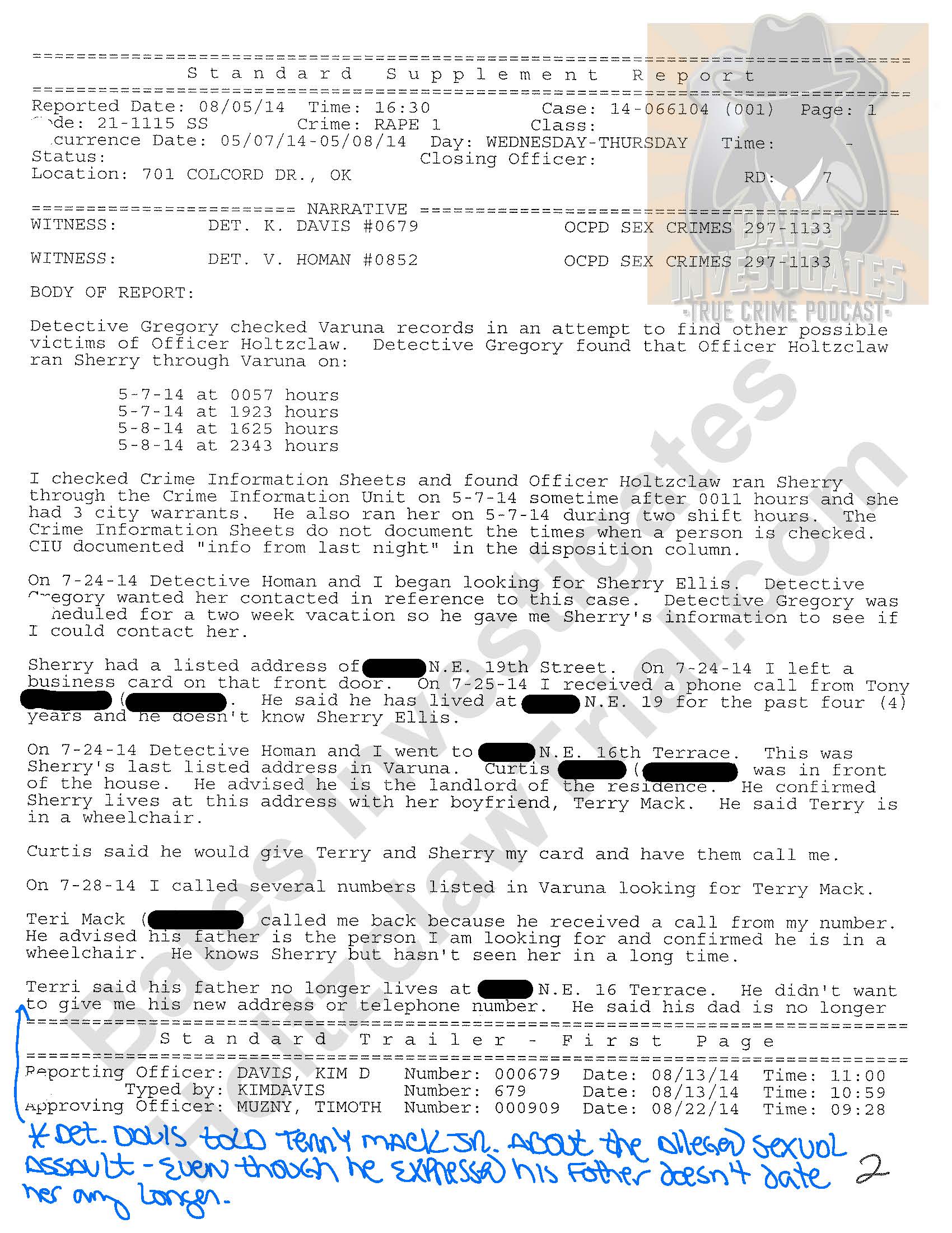


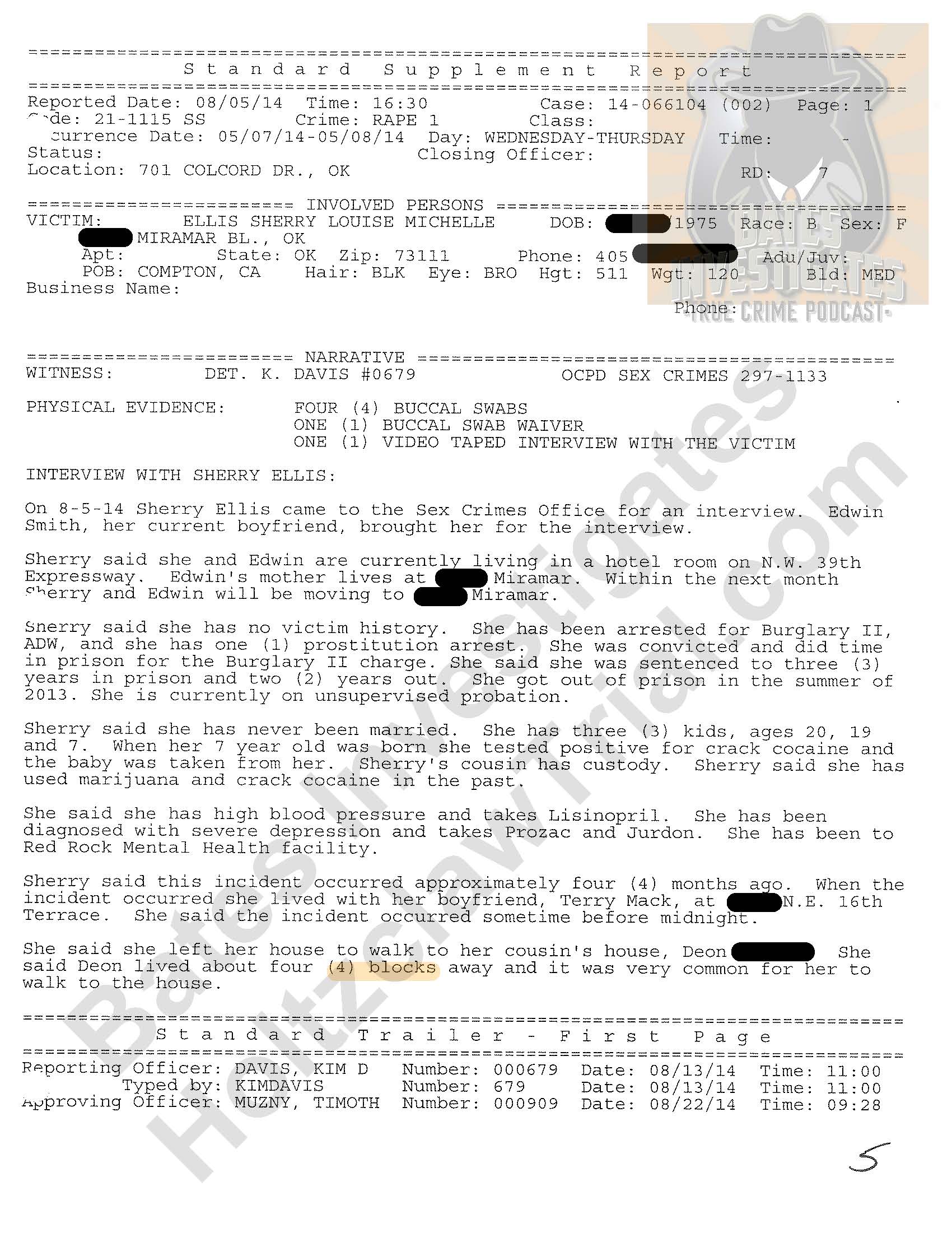
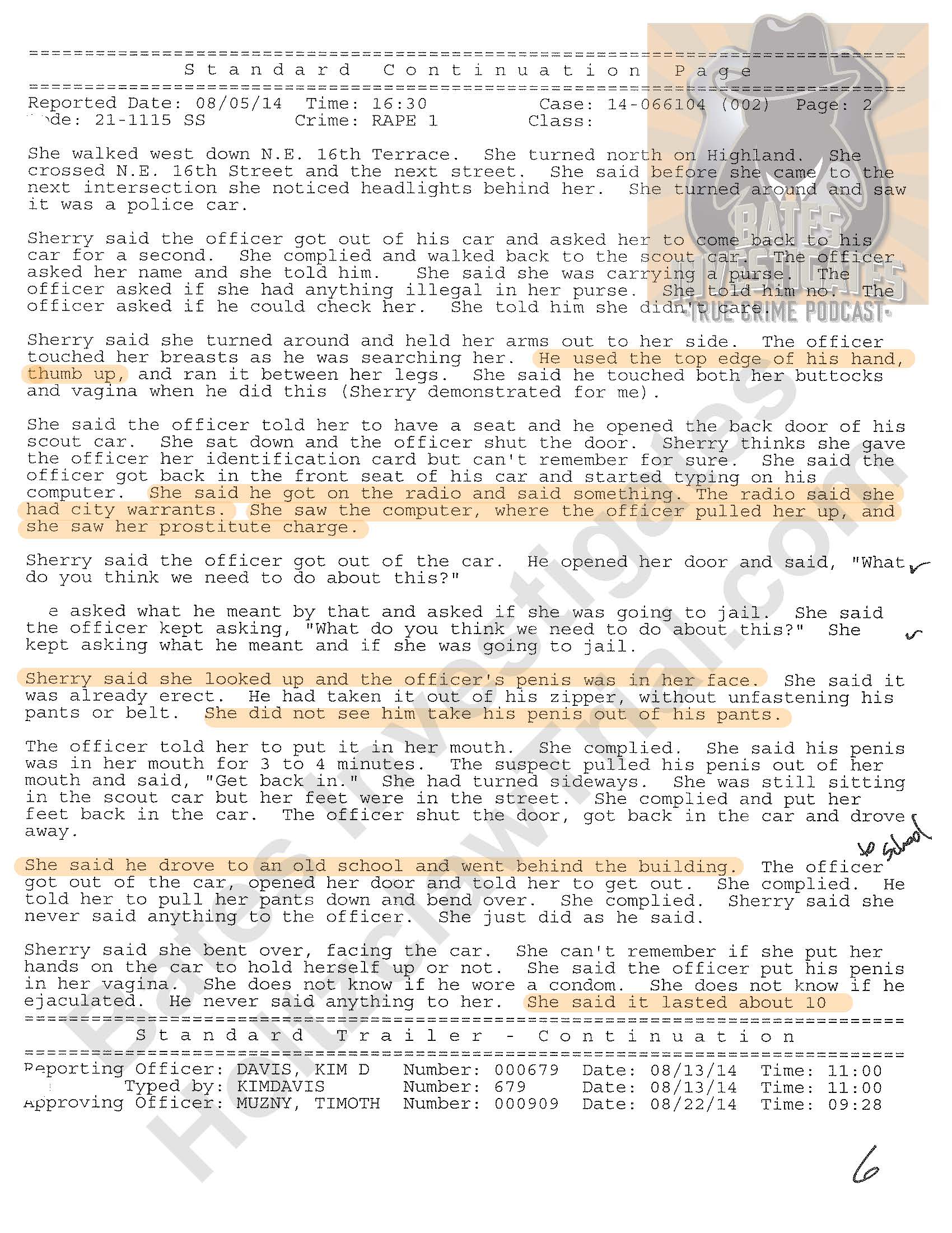
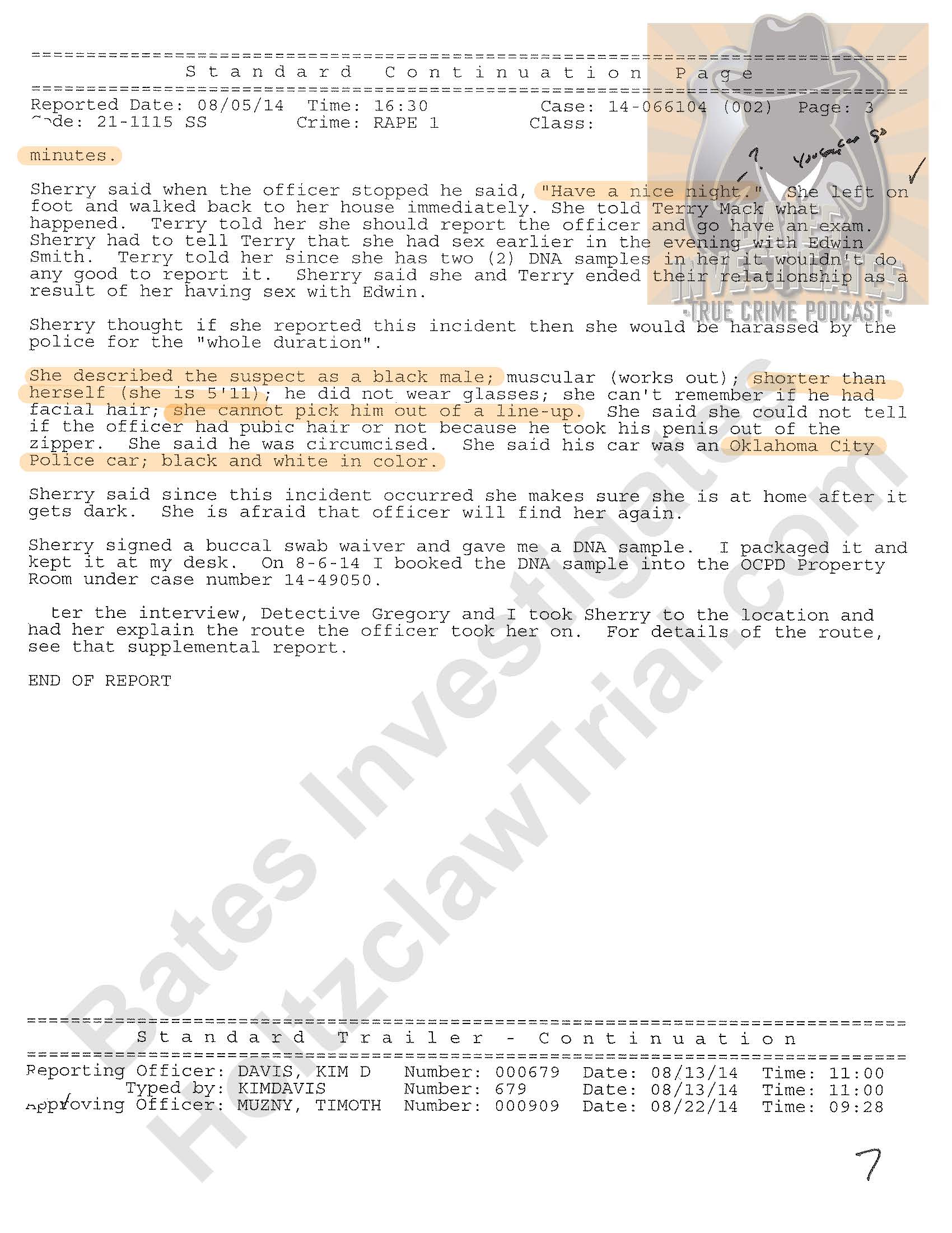
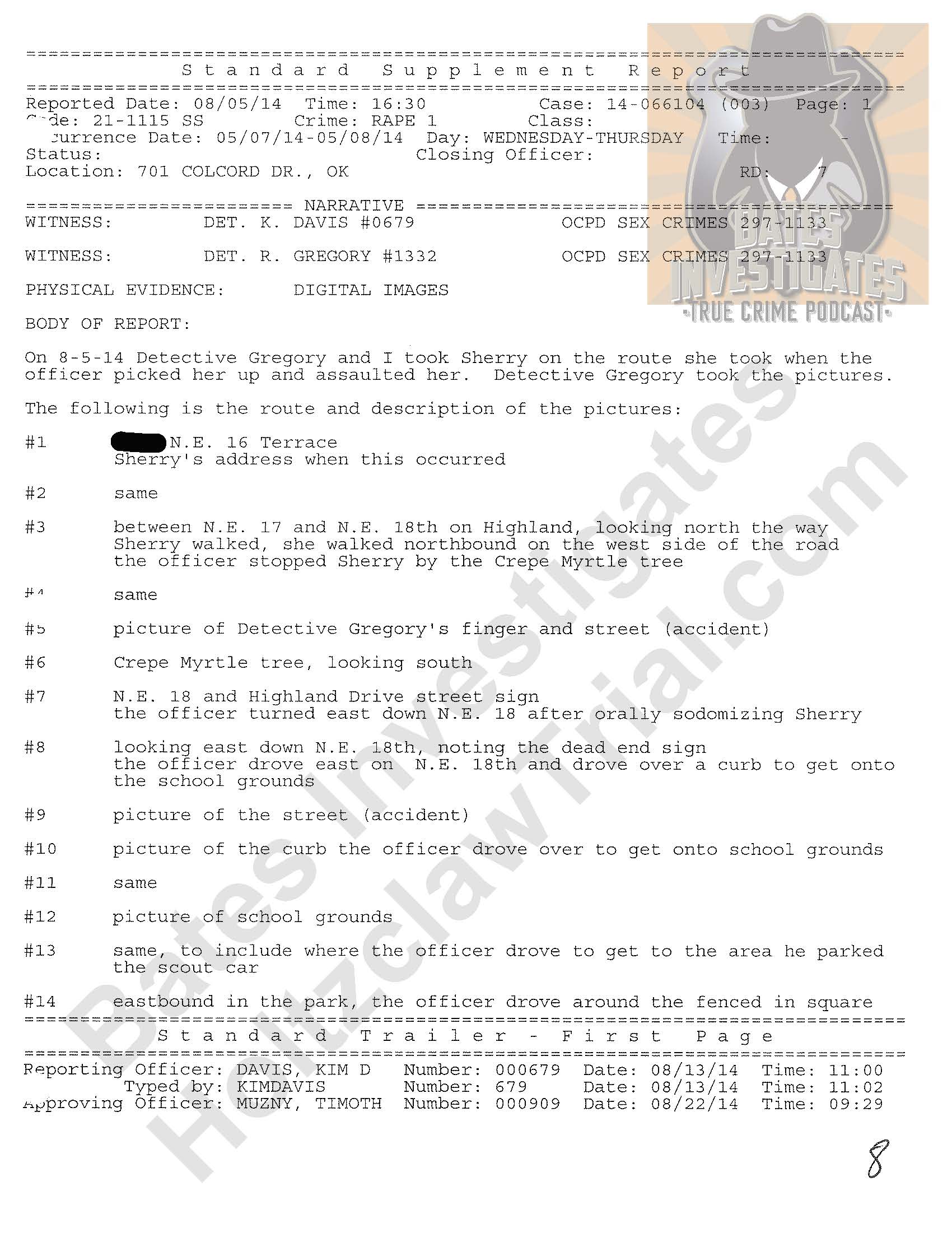

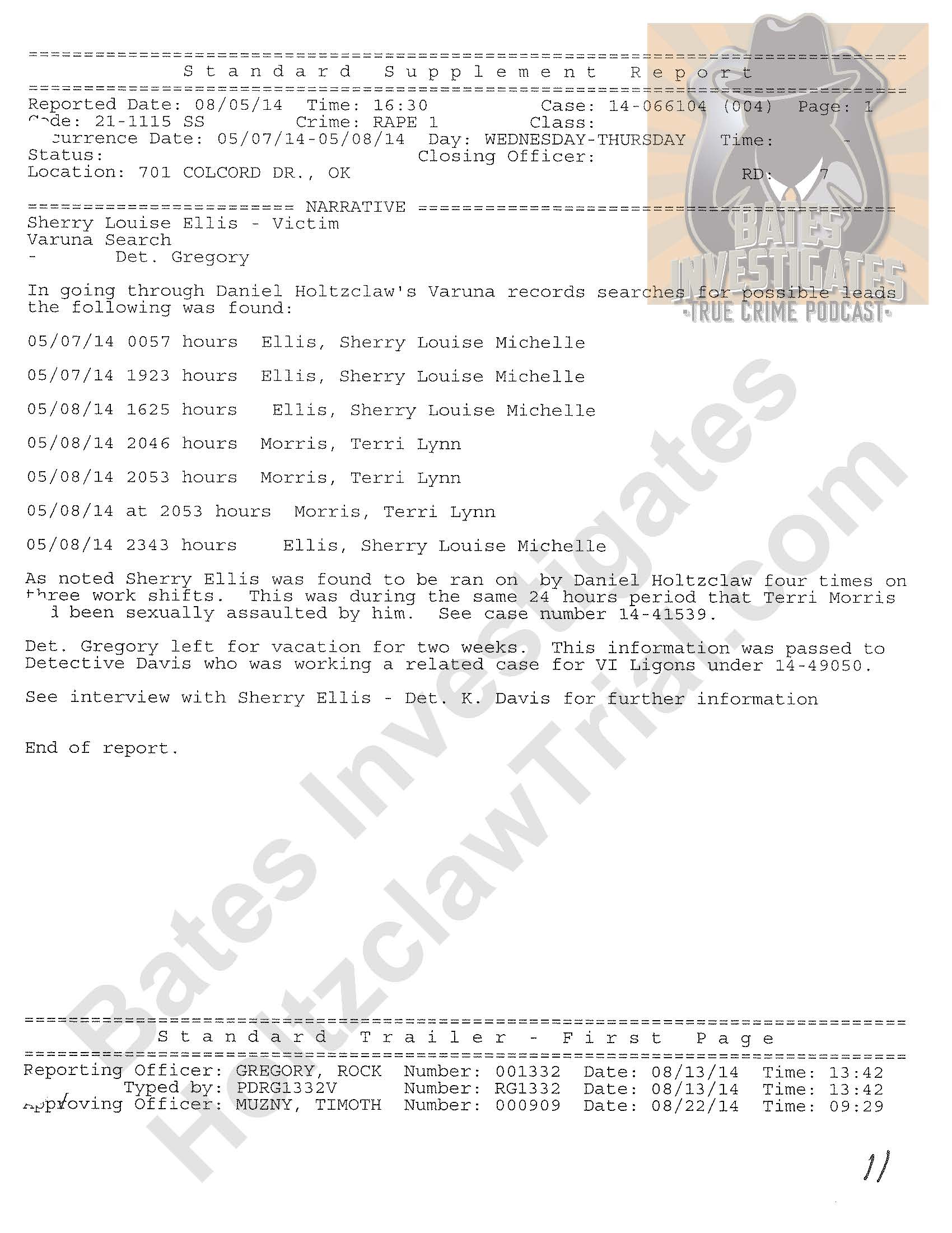
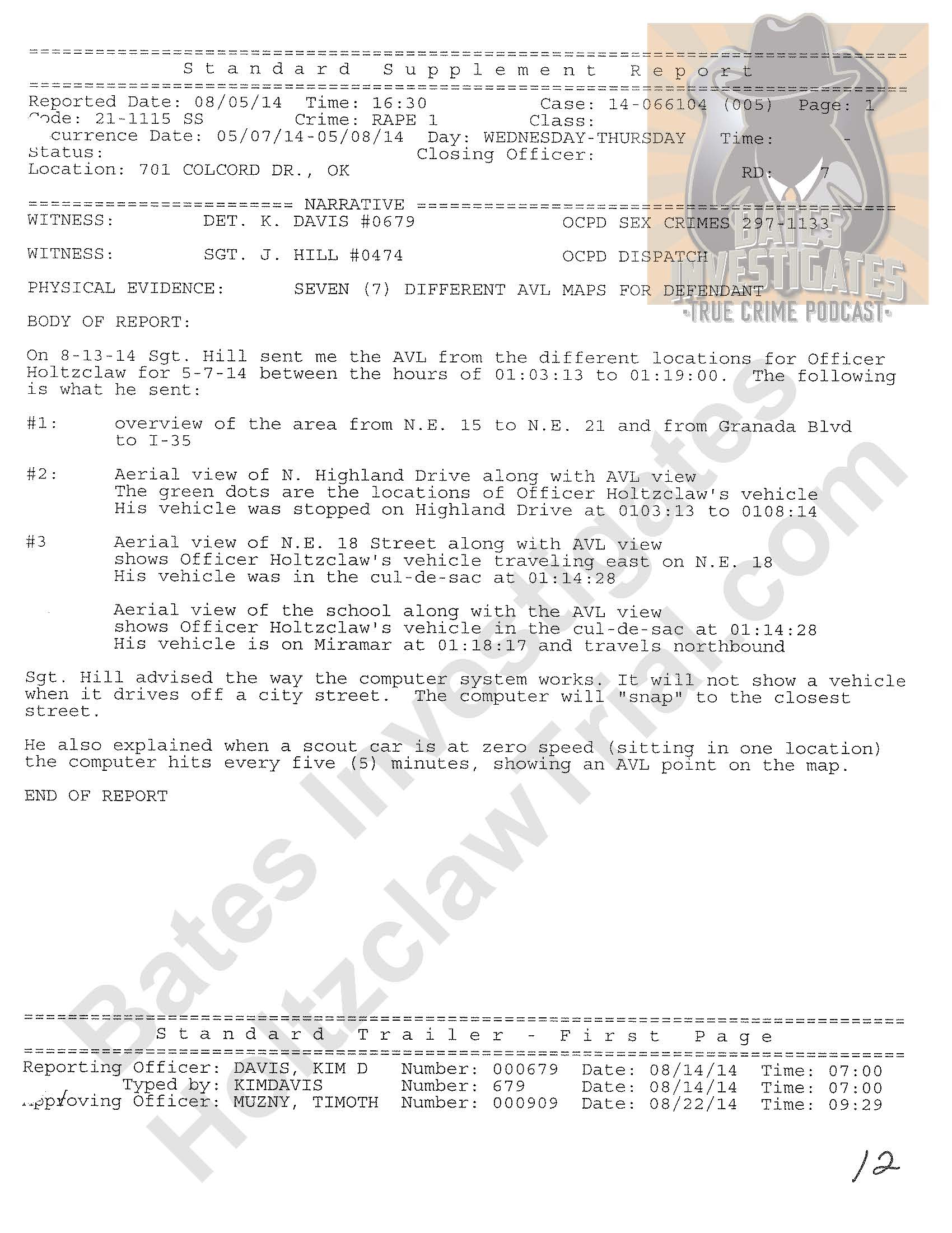
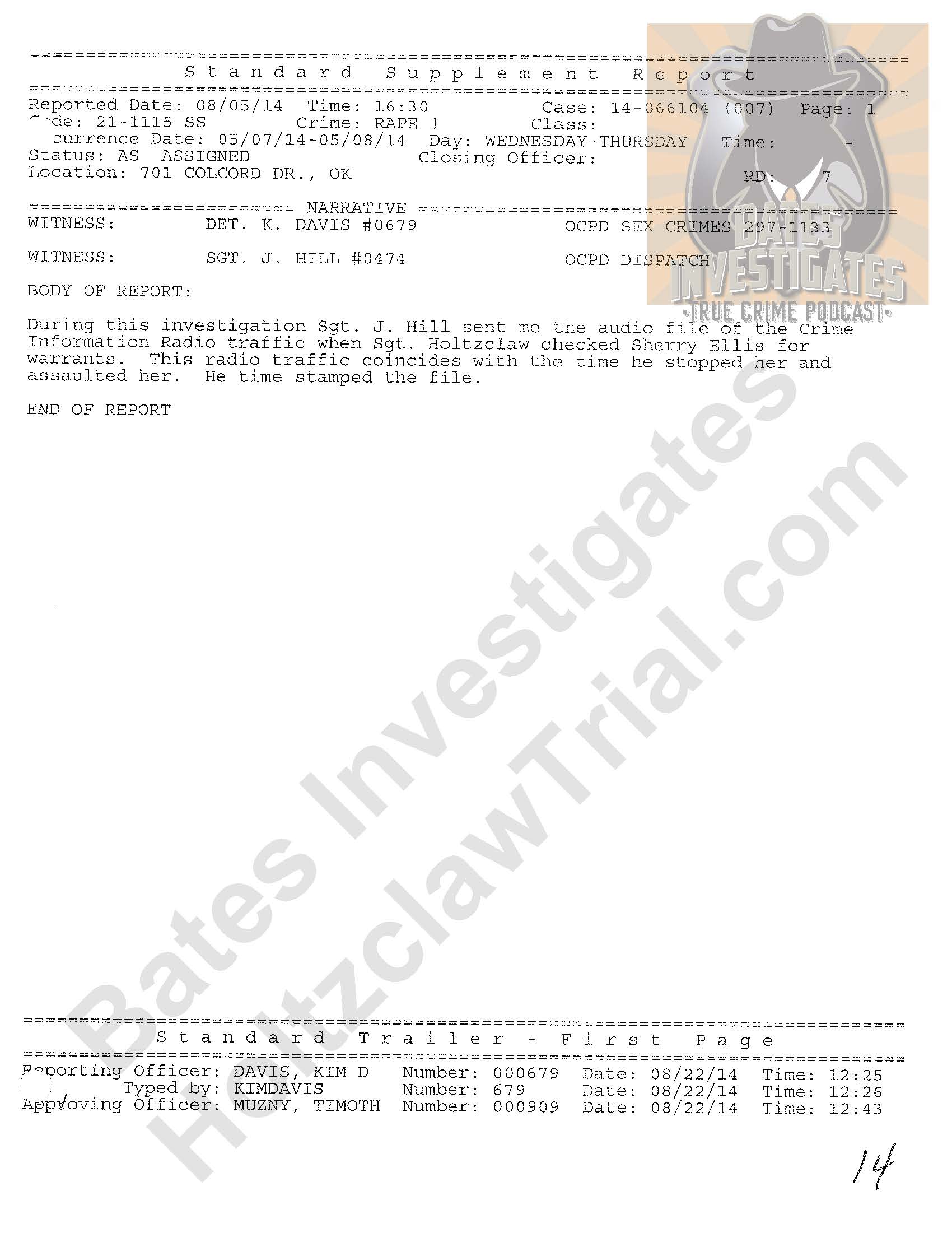

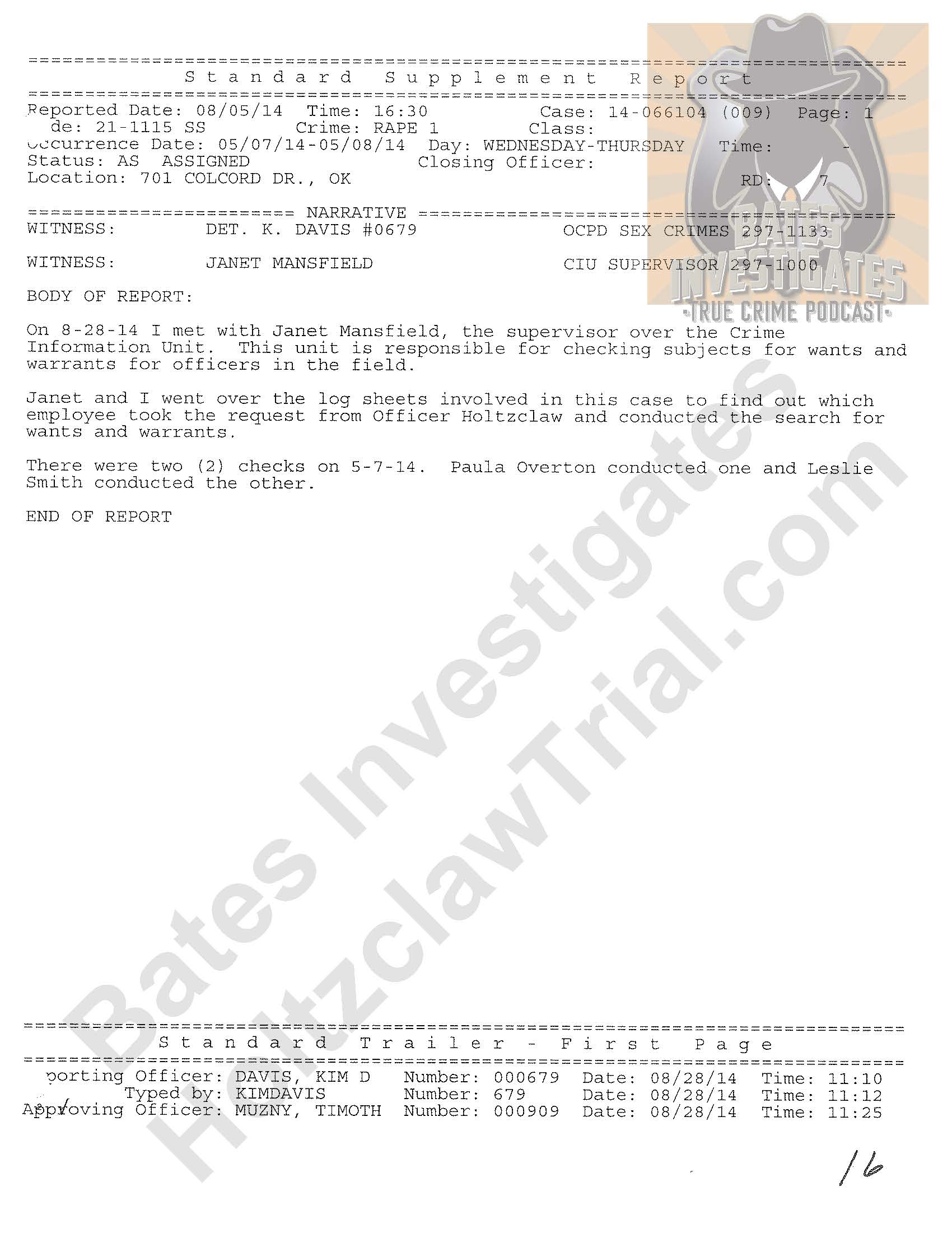


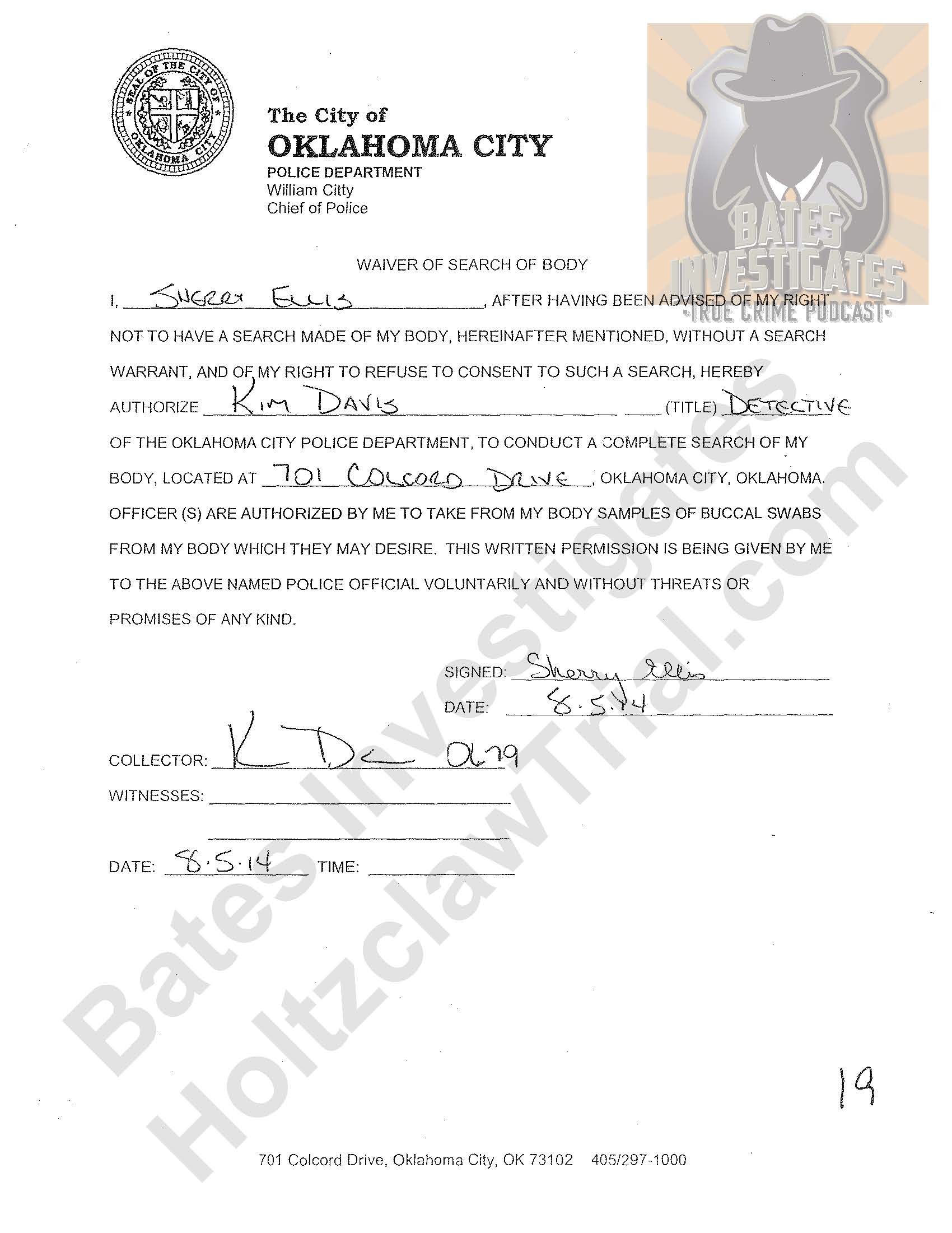


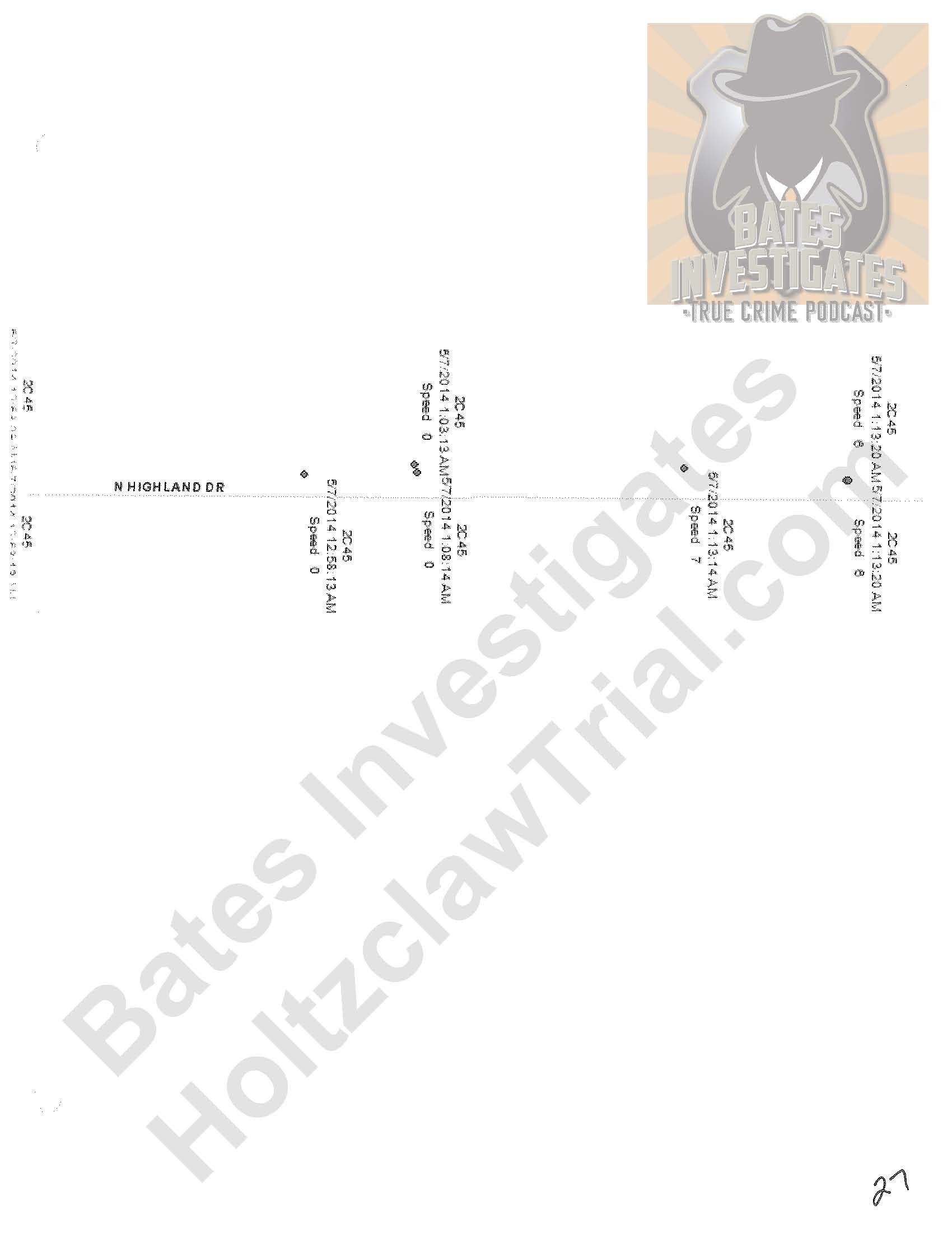
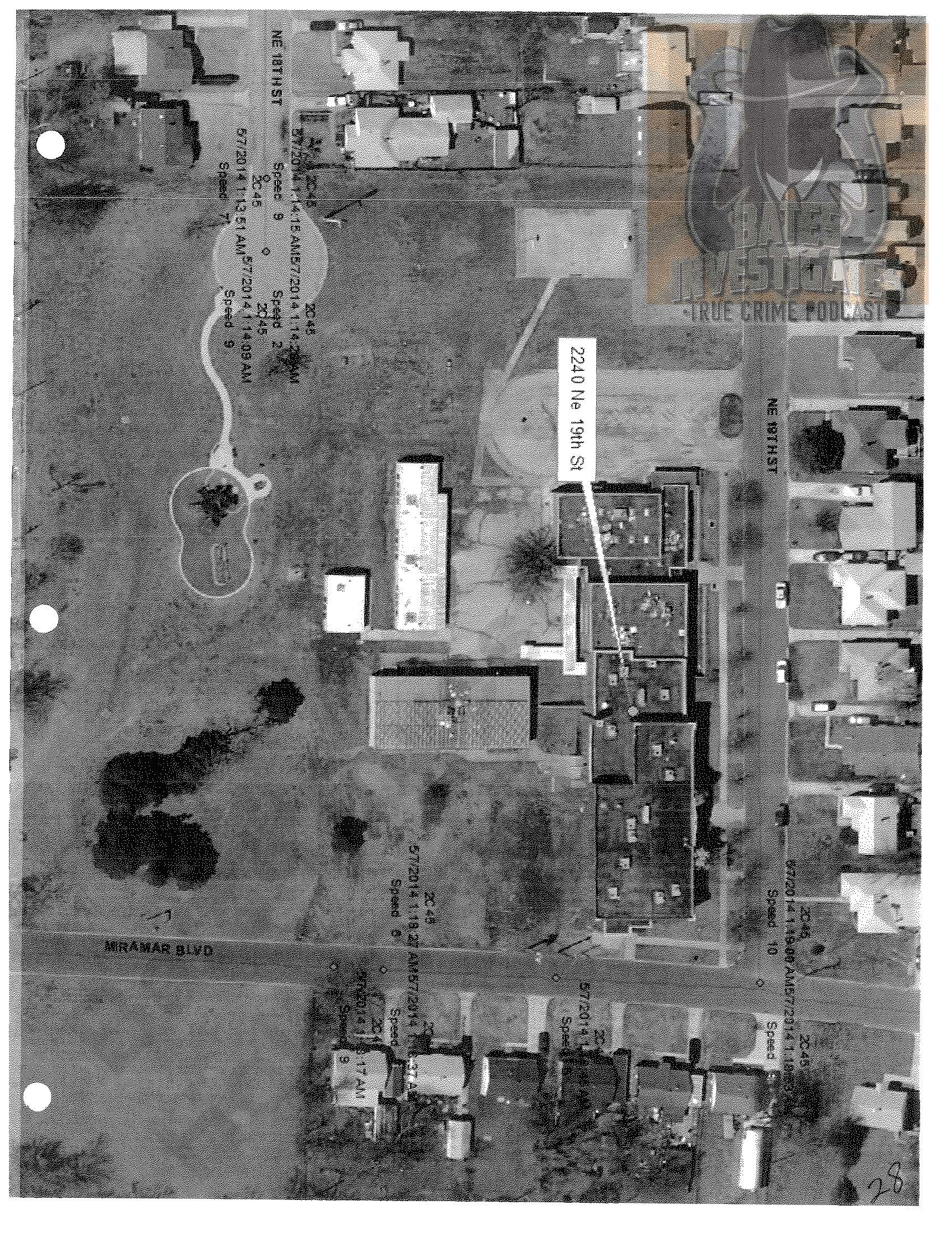

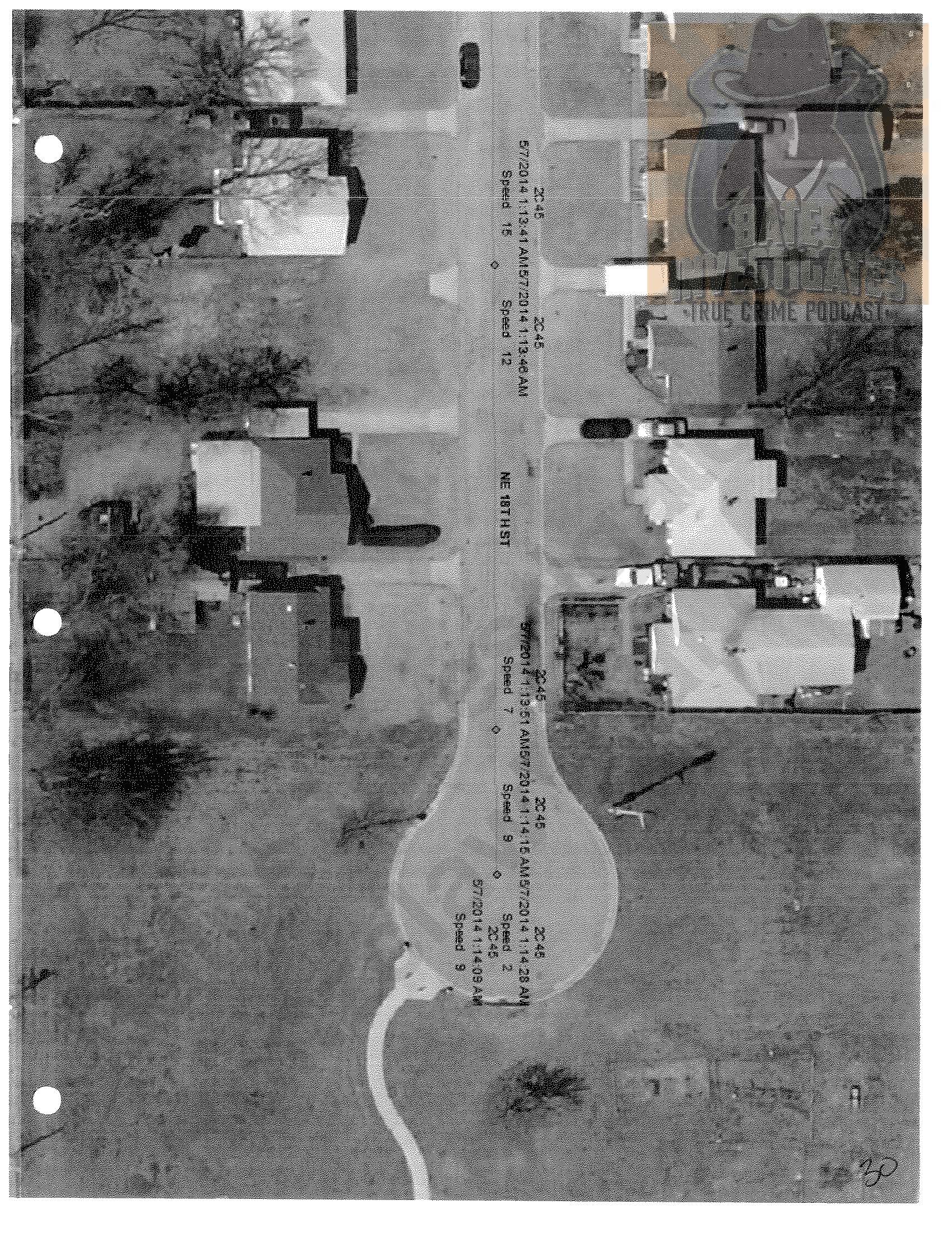

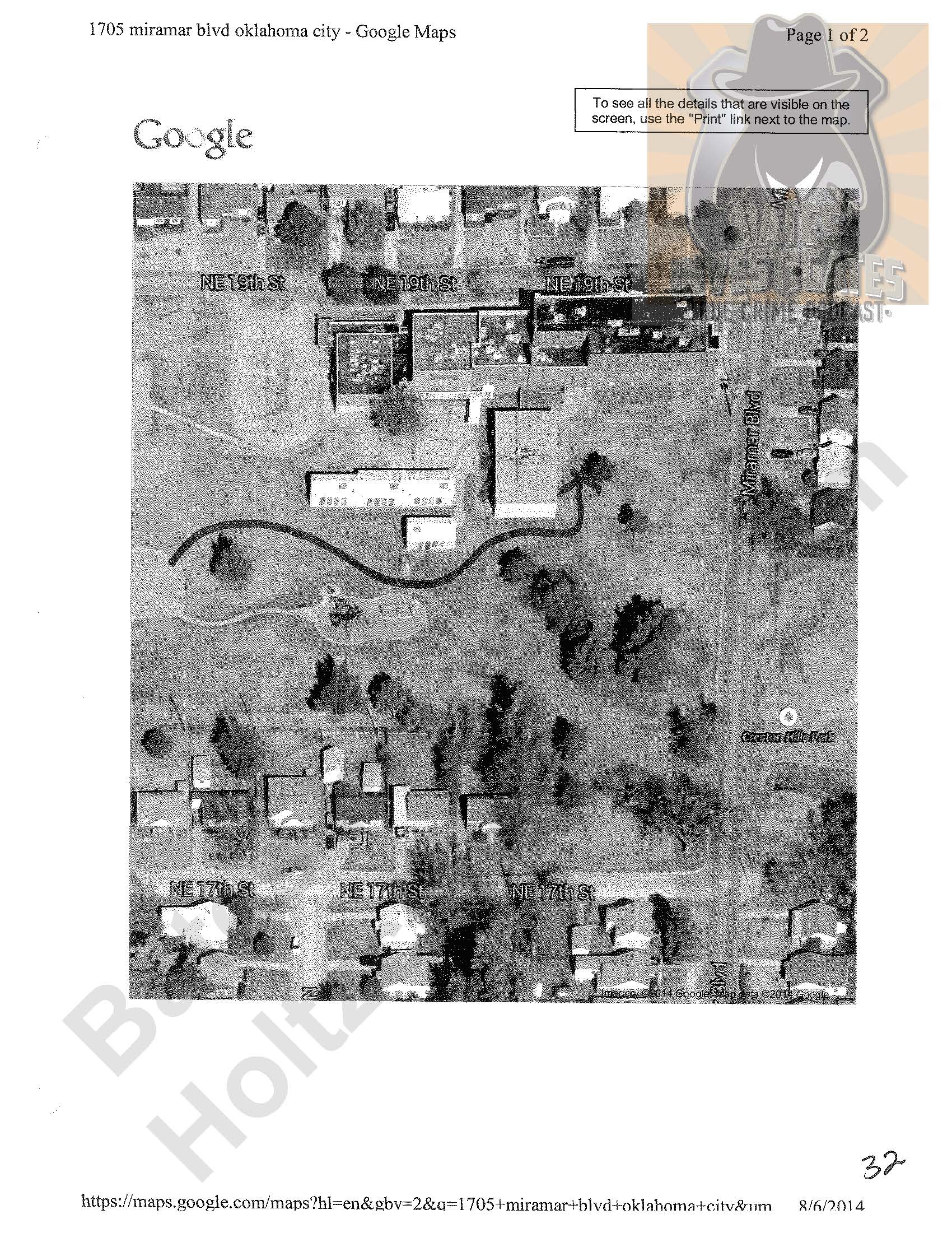


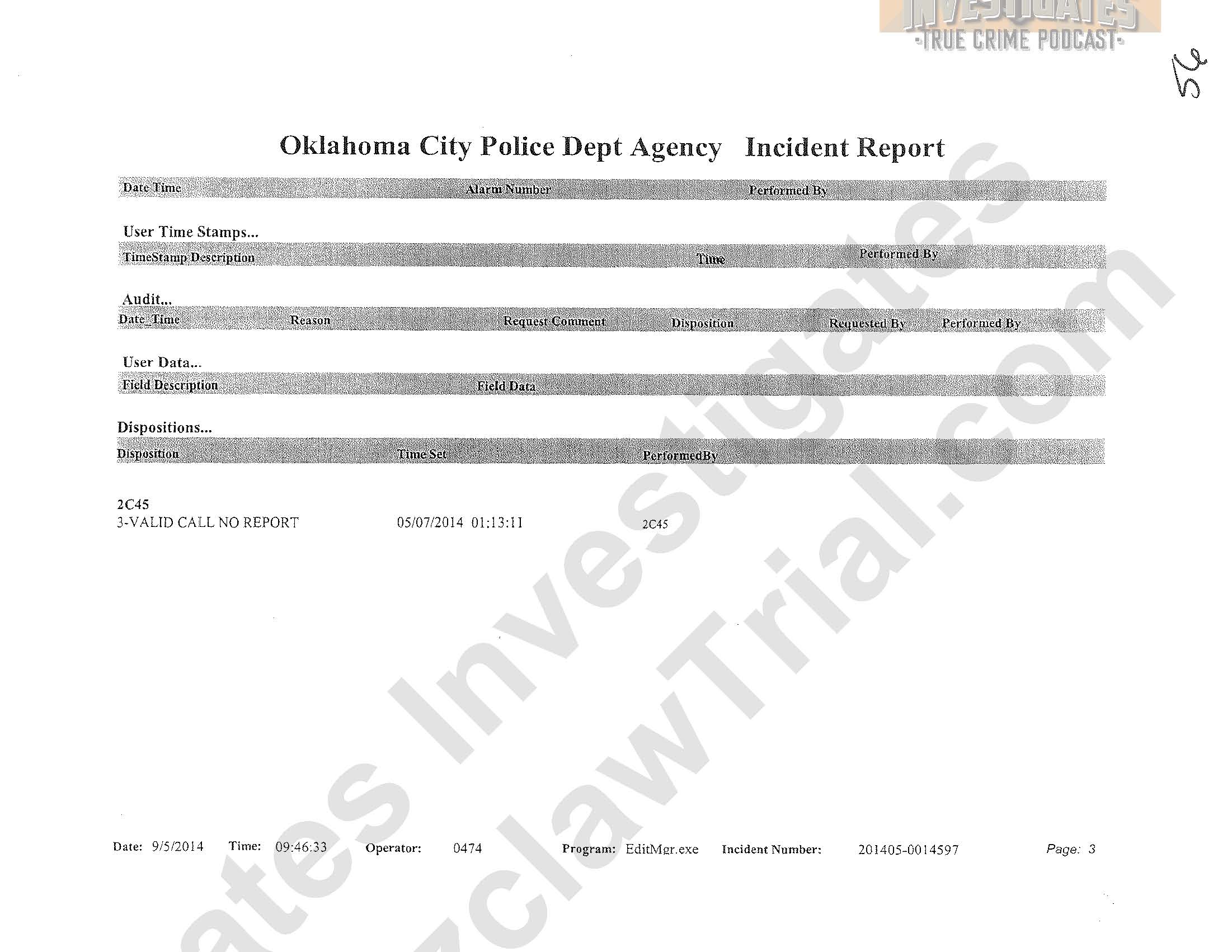

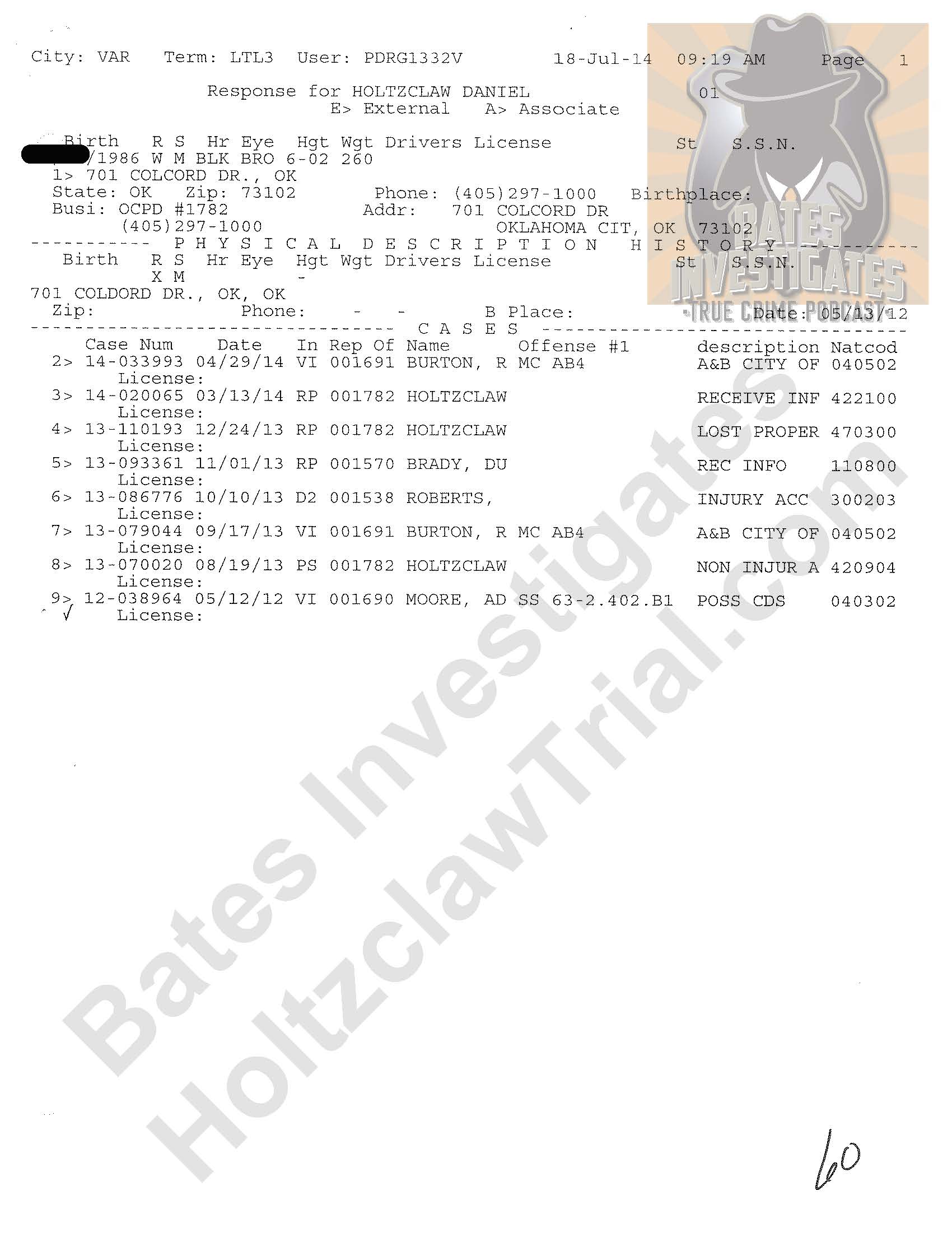


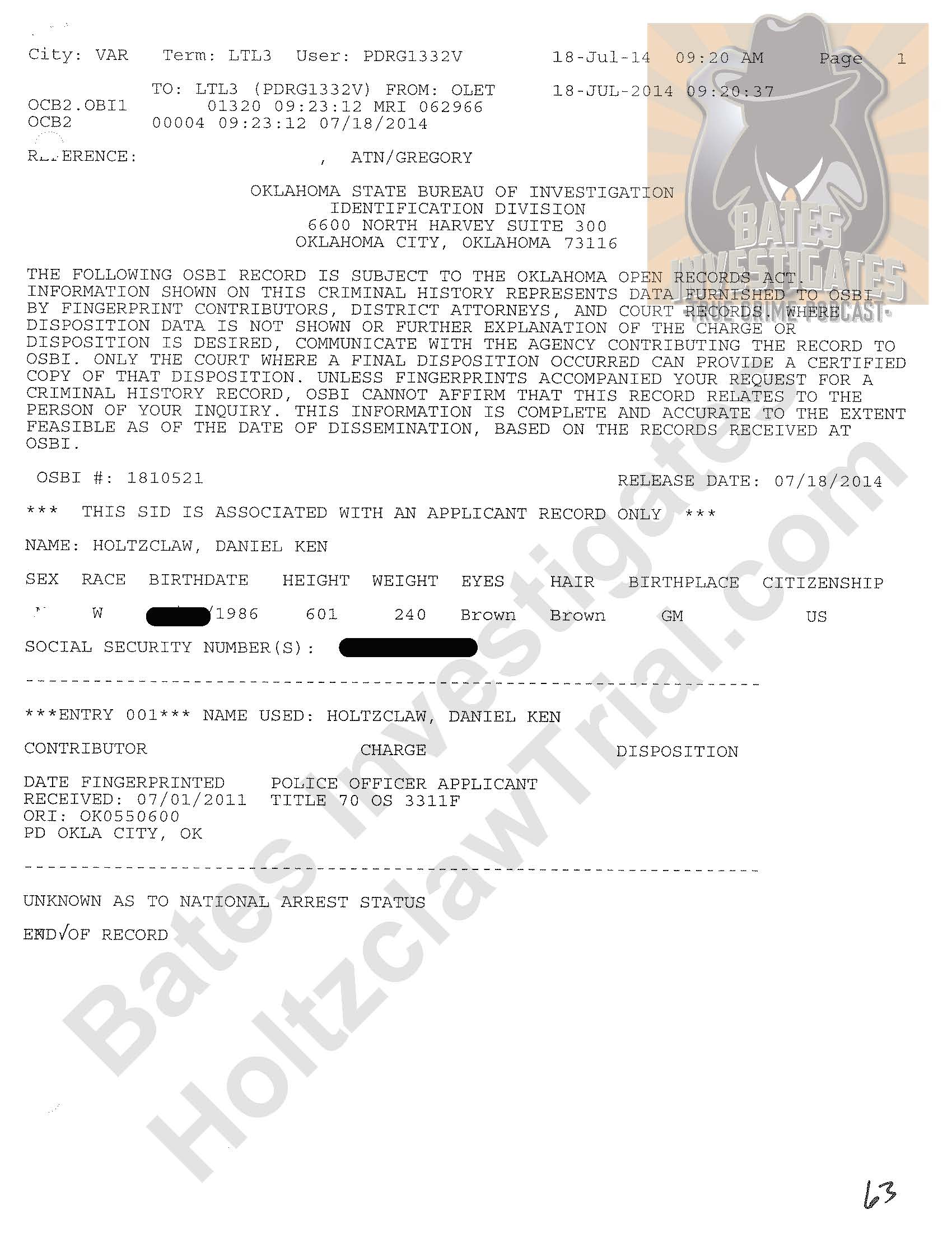
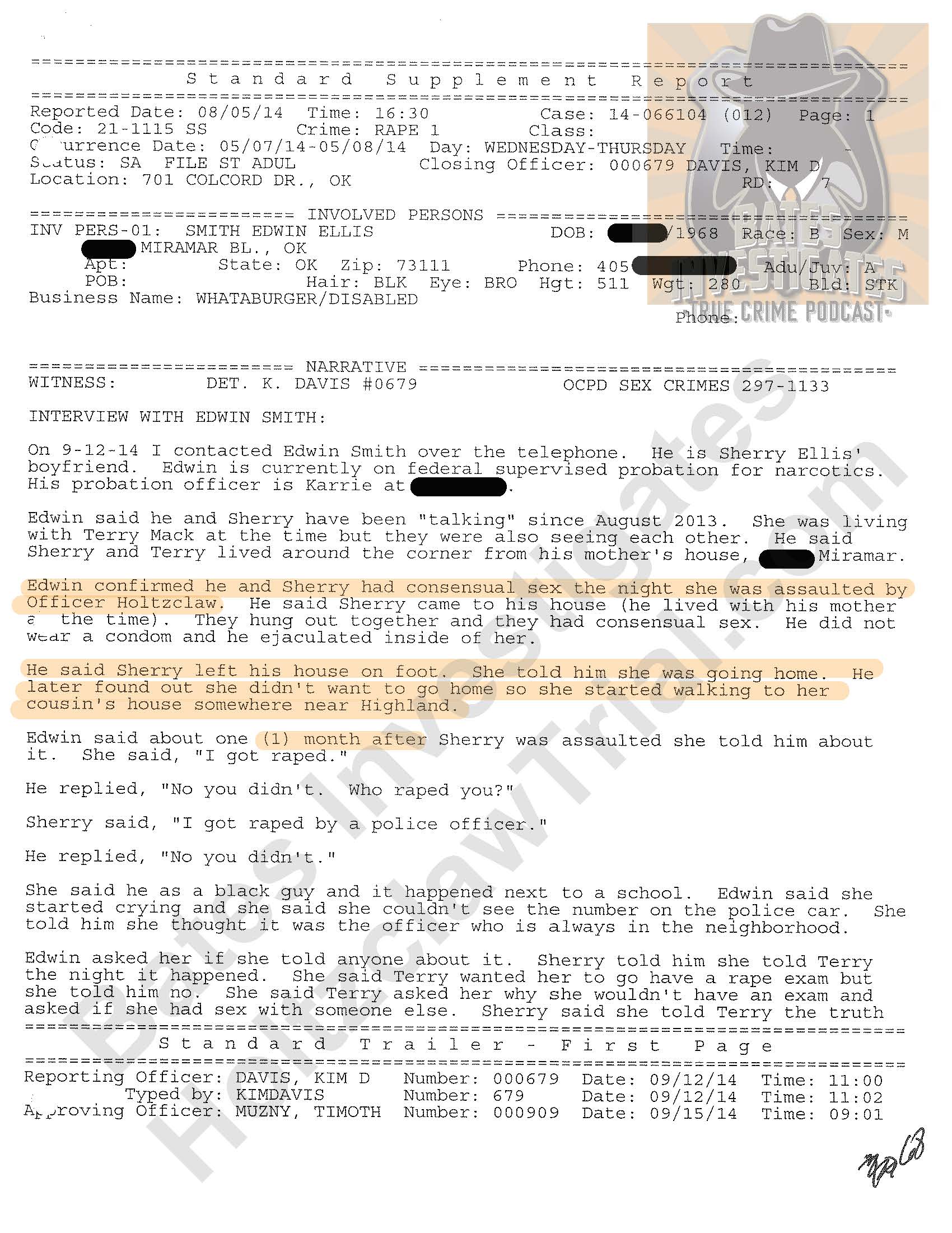

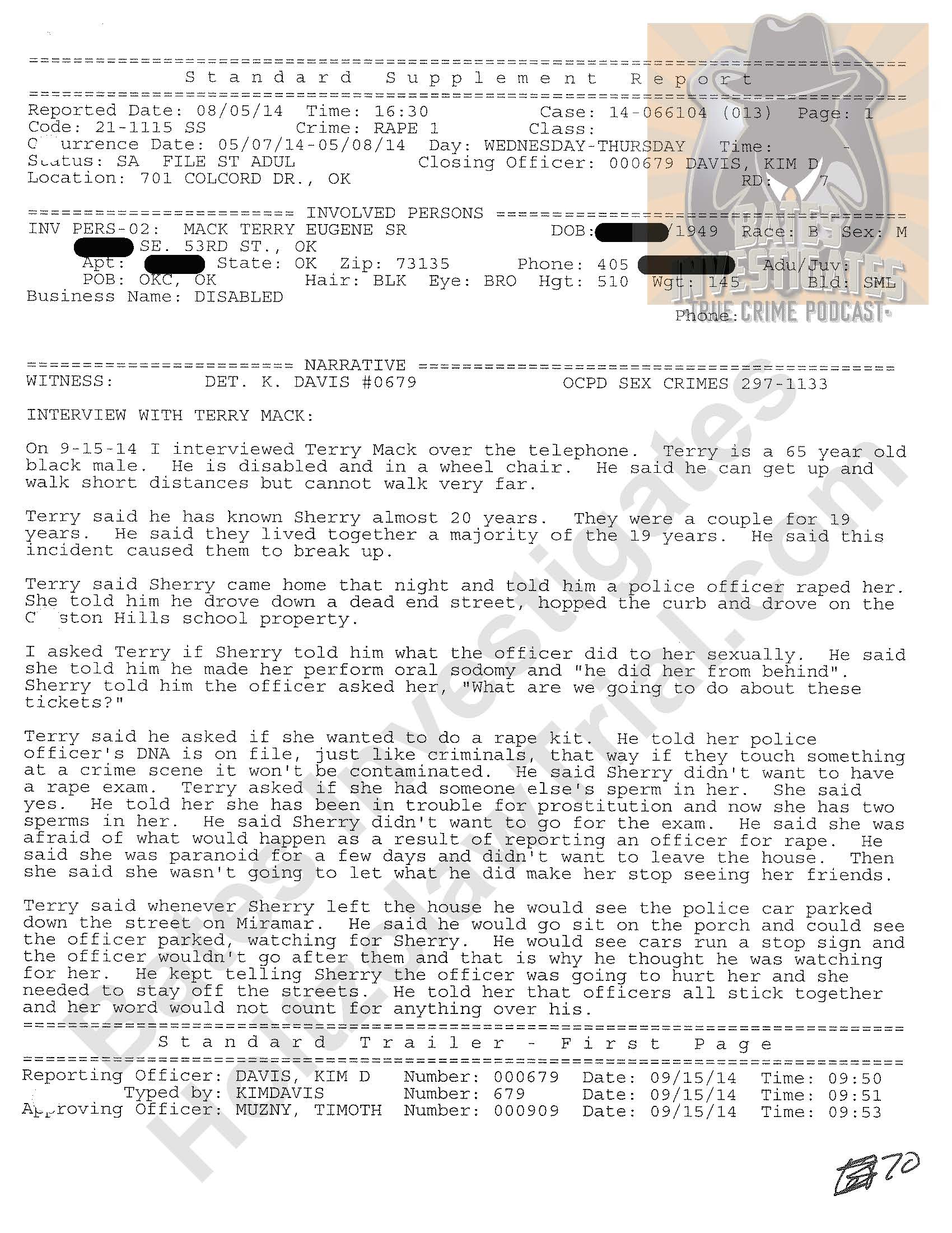

Investigative Photos Taken By Detectives Kim Davis and Rocky Gregory:




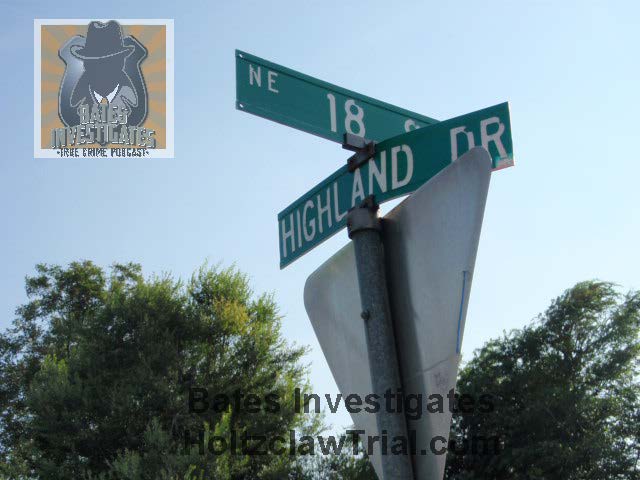





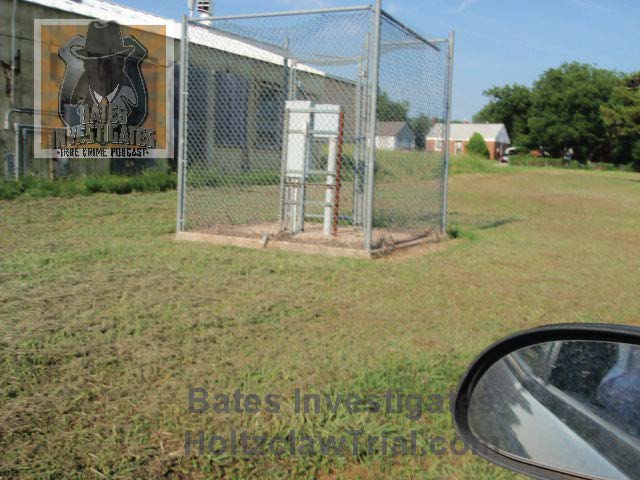

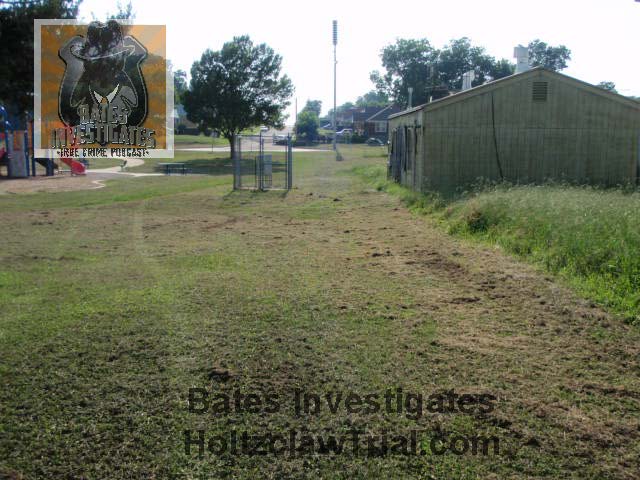











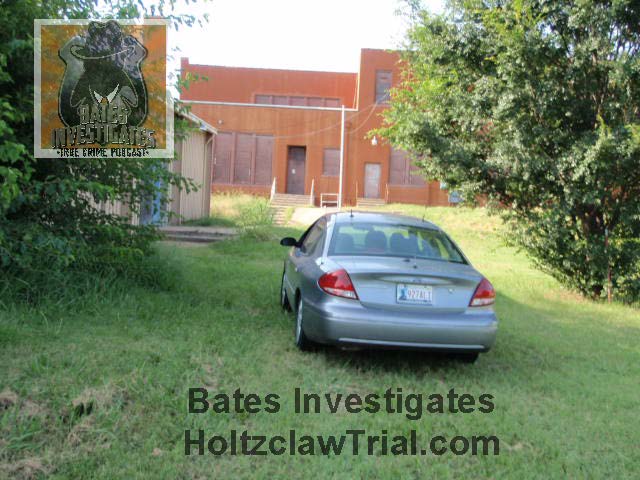




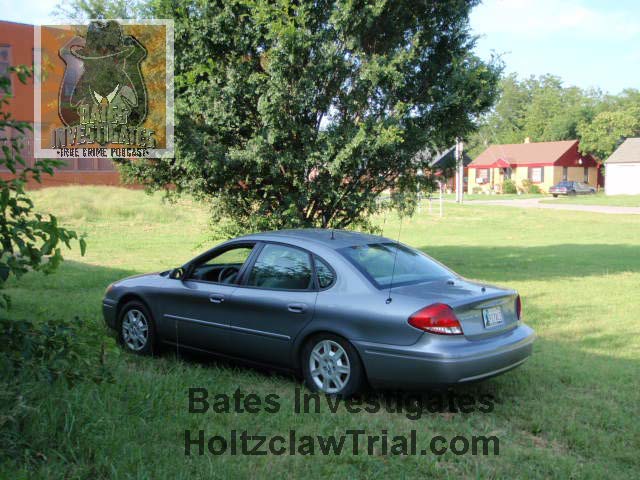
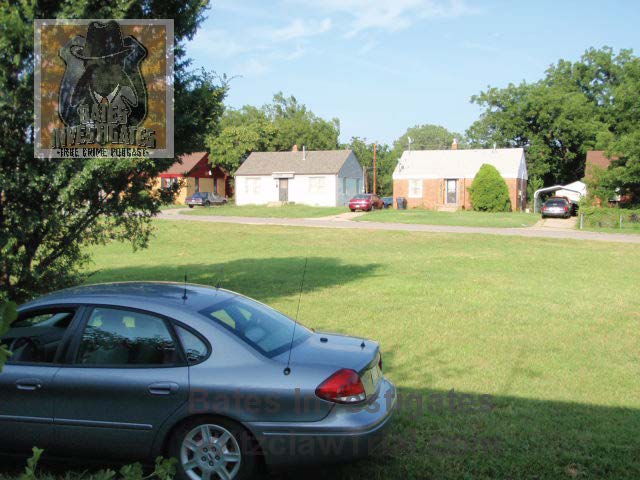

Investigator Brian Bates’ Notes Regarding AVL/GPS Data Below:
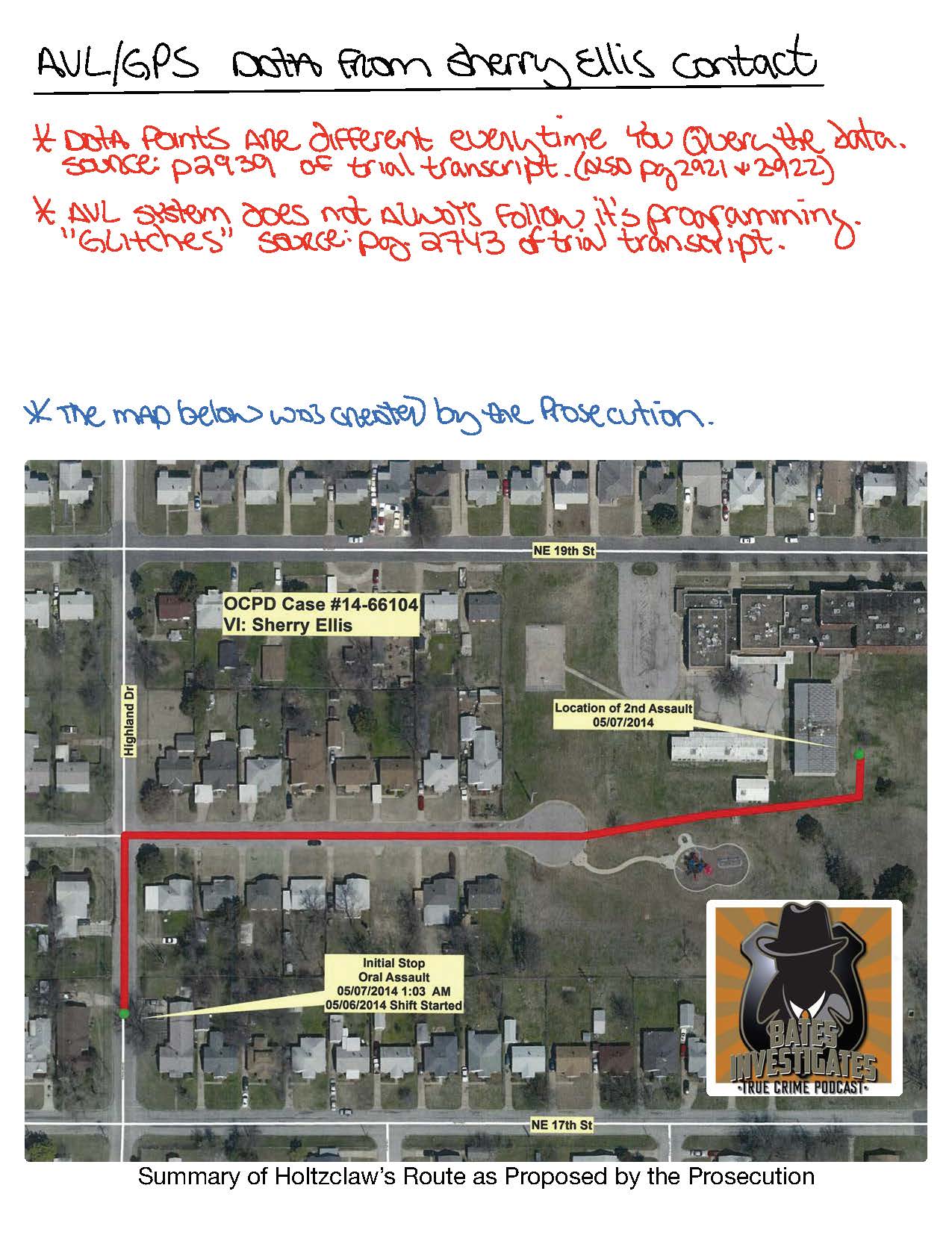
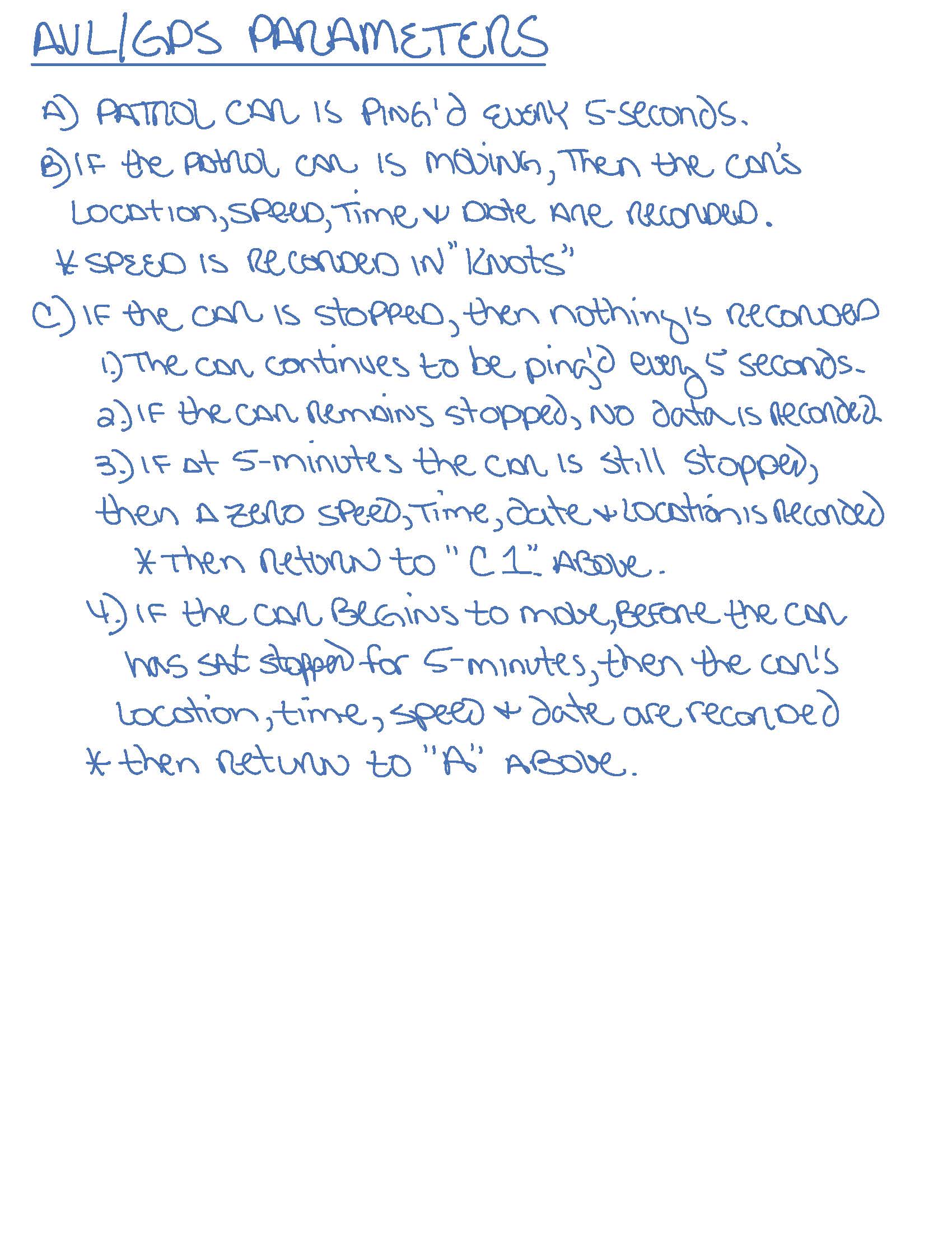
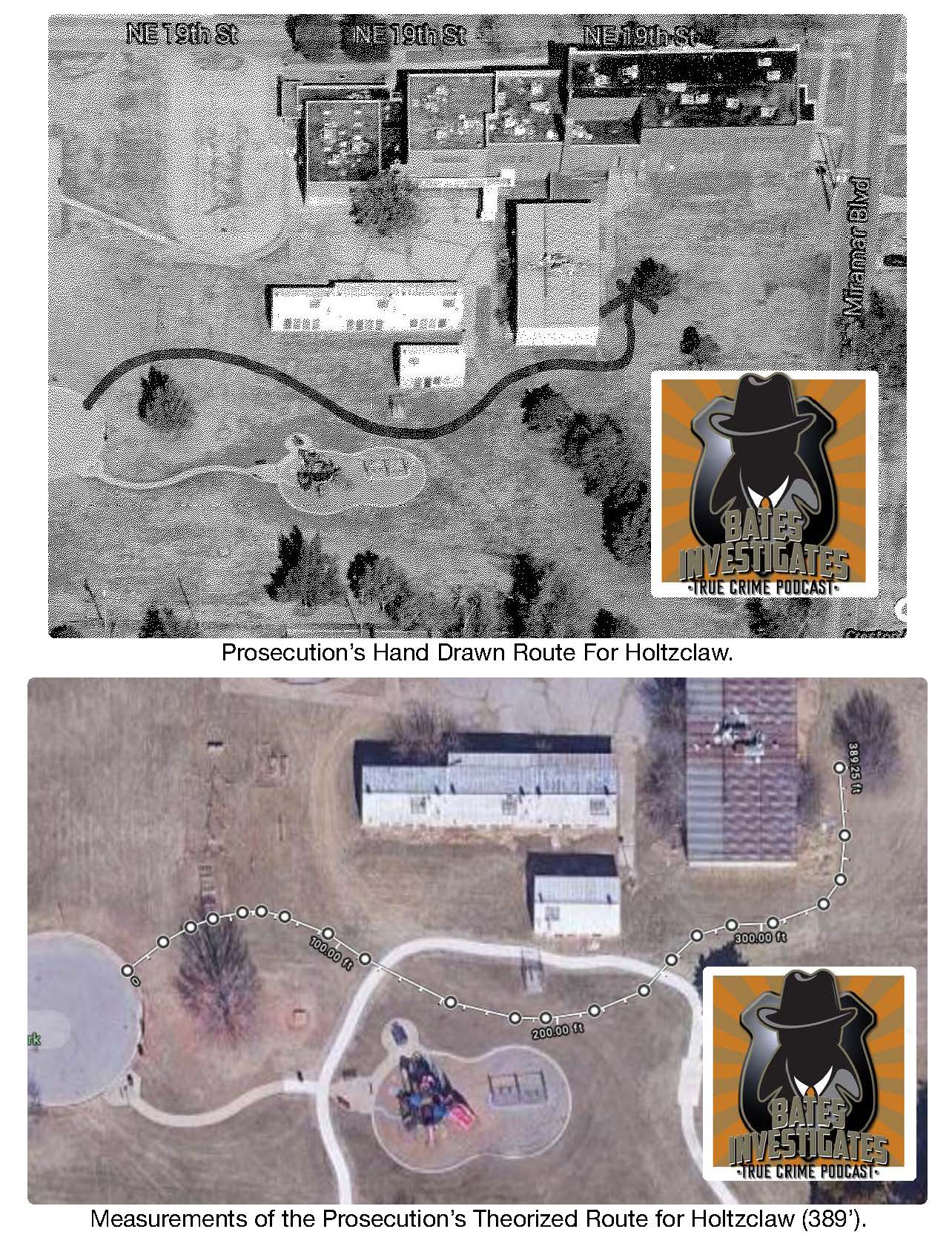
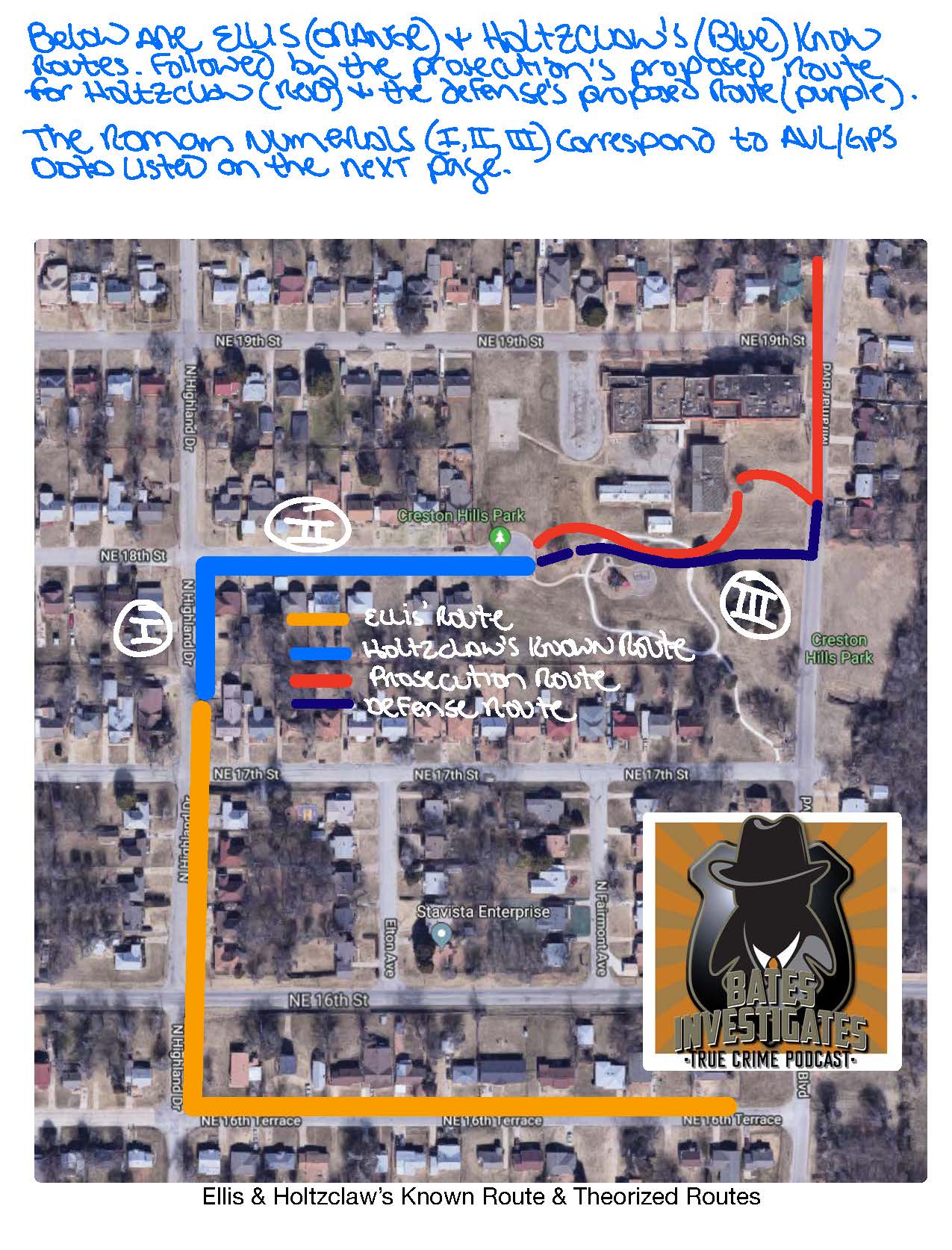

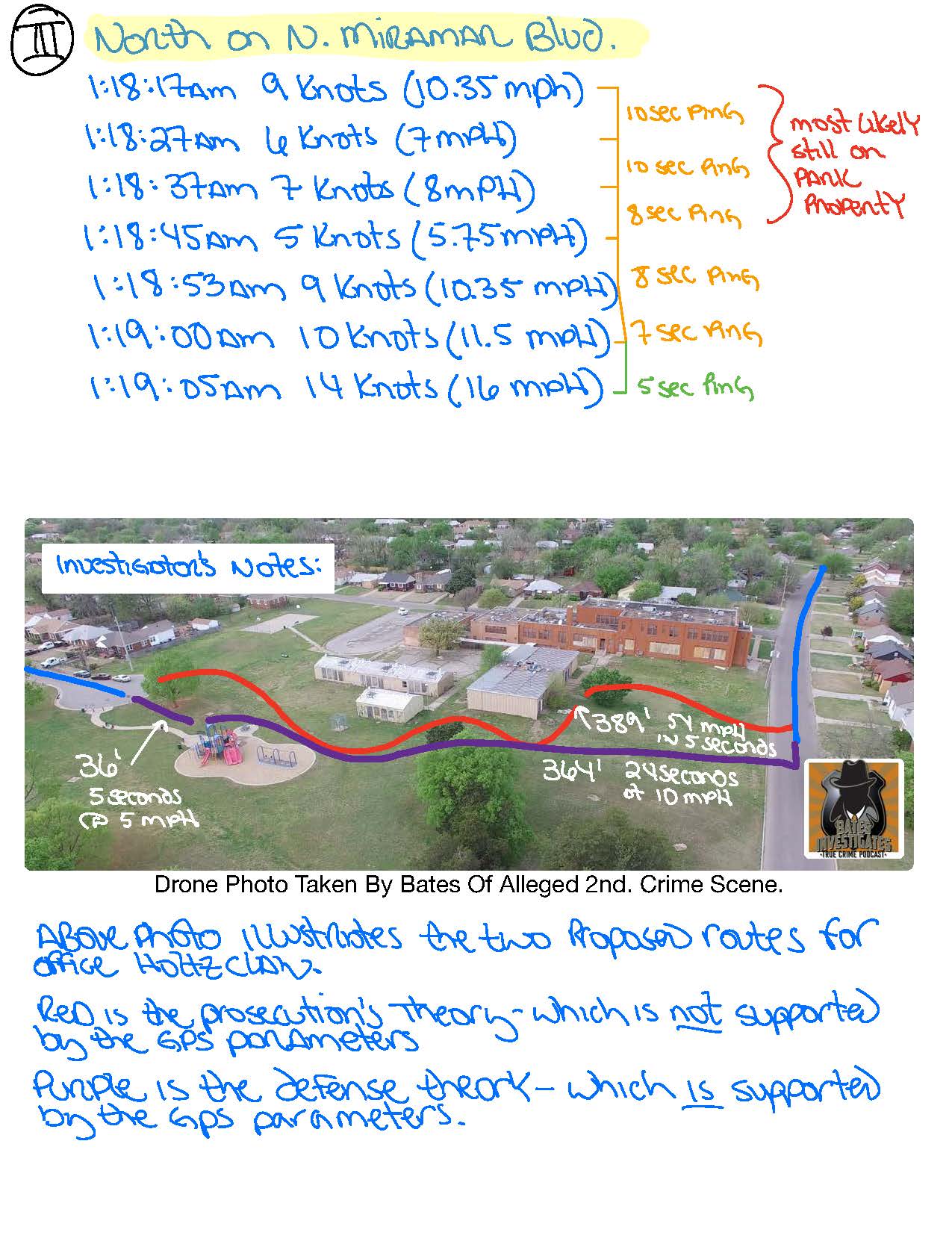
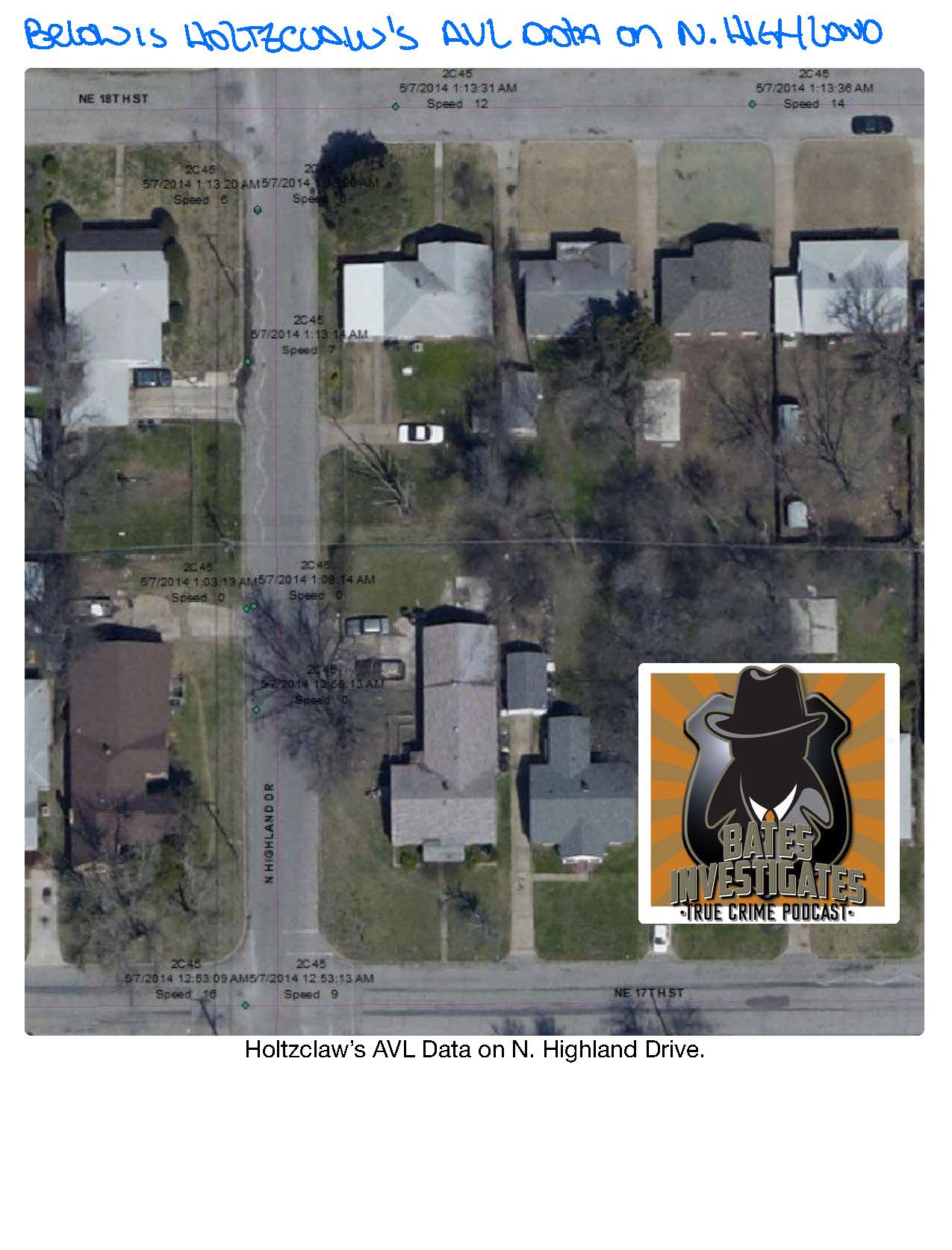
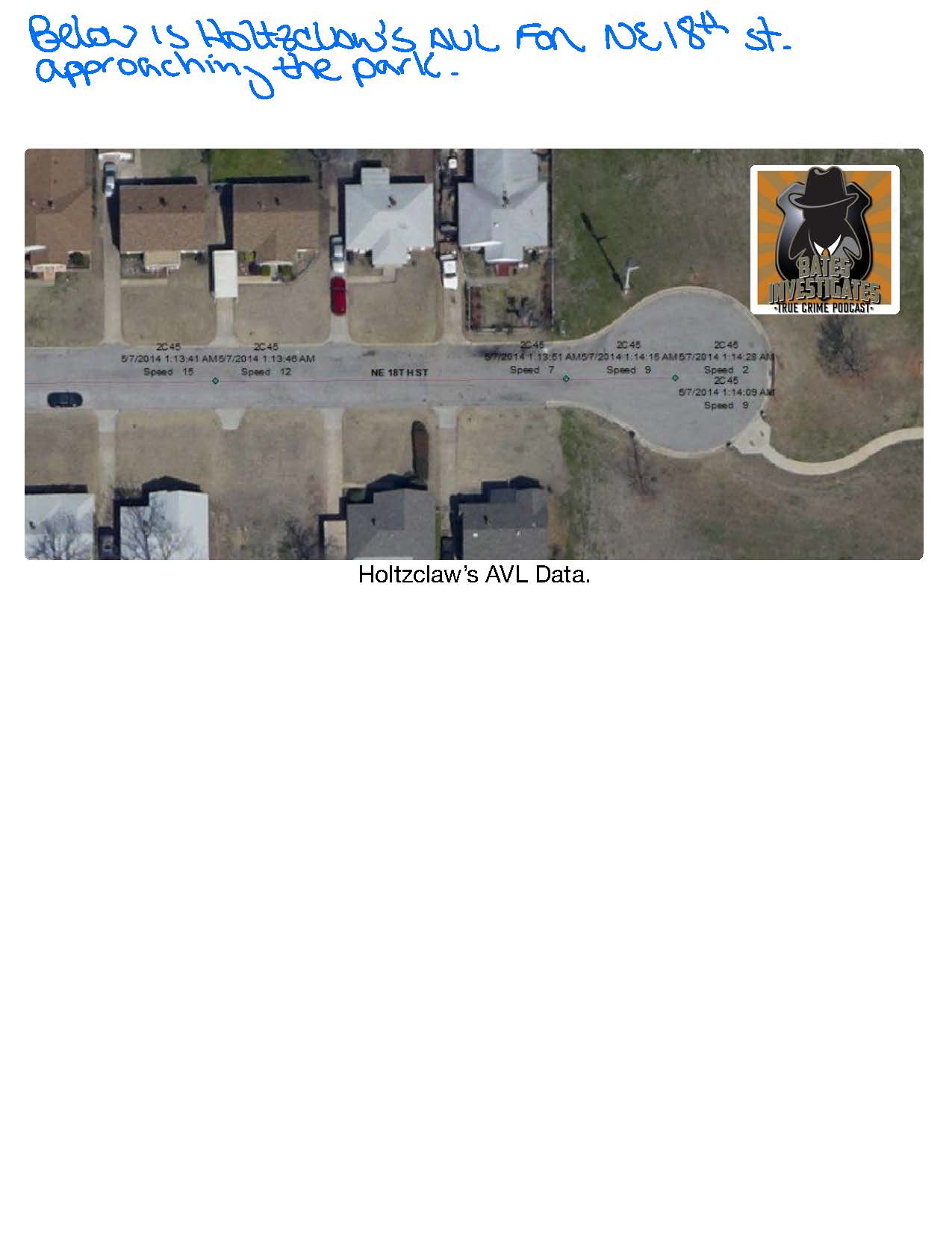


Below are 360° Photos Taken by Private Investigator Brian Bates
Photo of alleged 1st sexual assault location: On Highland Dr., between NE 17th St. and NE 18th St.
Photo showing where Holtzclaw most likely hopped the curb and the furthest distance he could have driven before his patrol car pinged his location again (36’) and showed the car to be parked.
Photo showing where Sherry Ellis claims Daniel Holtzclaw parked, removed her from his patrol car, bent her over and raped her. This location is 10x further than he could have driven based on his patrol car GPS.
Bates Investigates
Episode 9 ׀Daniel Holtzclaw: Sherry Ellis Allegations Wrap Up
[OPENING MUSIC]
Disclaimer: This podcast deals with adult subject matter, including depictions of drug addiction, prostitution, sexual assault, and rape. Parental guidance is suggested.
00:37[OPENING AUDIO COLLAGE]
Newscaster: Officer Daniel Holtzclaw, with the Police Department for three years, is accused of raping and sexually assaulting women he pulled over while on the job.
Jannie Liggons: He said, ‘Come on, come on, just a minute, just a minute’. I say, ‘Sir, I can’t do this’. I say, ‘you gonna shoot...’
Det. Kim Davis: Tell me your description of him.
Sherri Ellis: He’s black.
Det. Kim Davis: He’s b—okay, he’s a black male.
Det. Kim Davis: What did your daughter tell you?
Amanda Gates: She said, ‘I met this really hot cop’.
Shardayreon Hill: So, this is good evidence?
Det. Rocky Gregory: Well, you tell me.
[OPENING AUDIO COLLAGE ENDS]
Timestamp: The following episode contains investigative events which occurred on August 5, 2014.
01:26
Host: Welcome back to Bates Investigates - Season One - episode nine. I am your host, licensed Private Investigator, Brian Bates, and I am breaking down the case of the State of Oklahoma vs. Daniel Holtzclaw. I was a member of Daniel Holtzclaw’s original criminal defense team and this podcast follows the format of the case, as presented by the prosecution but with the scrutiny of the defense. In the last episode, Oklahoma City Sex Crimes Detective, Kim Davis, had been trying to reach thirty-nine year old Northeast Oklahoma City resident Sherry Ellis. On August 1stof 2014, Davis and Ellis had a telephone conversation wherein Ellis alleges she was twice raped by an Oklahoma City patrol officer at two different locations during the same encounter. At the end of their telephone conversation, Ellis agrees to meet with Detective Davis on August 5, 2014, at police headquarters to discuss her allegations in detail. In episode eight, you heard both of those conversations, and I have posted the video recording of the second interview on episode eight and episode nine’s homepage at holtzclawtrial.com. While Ellis never names her attacker, Detective Davis has already determined that it must be Daniel Holtzclaw. Despite the fact that Ellis clearly stated that her attacker was a short black male police officer driving the older model patrol car. In this episode, I'm going to break down Ellis' claims, and go over the evidence, contradictions, and give you my thoughts as to what actually may have happened when Holtzclaw and Ellis encountered each other in May of 2014. According to Ellis’ August 5, 2014 interview with Detective Davis, she was on probation at that time after being previously released from prison in July of 2013. Ellis had received a three year prison sentence for a Burglary Two conviction. She ended up serving less than a year.
03:38
Ellis also has convictions for Transporting a Loaded Firearm, Driving Under Suspension, Transporting an Open Container, Assault with a Deadly Weapon, and Offering to Engage in Prostitution. Ellis disclosed that she has three children, ages twenty, nineteen and seven. Ellis lost custody of her youngest child at birth because she tested positive for crack cocaine. Ellis also stated she has received services from Red Rock Mental Health Facility and is on medication for severe depression. At the time of the alleged rapes, Ellis was living with her much older, long-term boyfriend, sixty-four year old, Terry Eugene Mack, Senior. Terry has a criminal history of his own, that includes time spent in prison for drugs and Possession of a Firearm After Felony Conviction. Ellis also has another boyfriend, forty-six year old, Edwin Smith. Edwin, like Terry, also has a criminal record that includes state prison time for Larceny of a Vehicle and federal time for narcotics distribution. In 2014, Edwin was living with his mother in her home just around the block from Terry and Ellis' residence. The following is a brief summary of Ellis' version of events.
05:03
Ellis can't remember the date, but she believes the rapes occurred about three or four months prior to her meeting with detective Davis. That puts the date around April or May of 2014. It's a little before midnight and Ellis walks out of her house in the twenty-two hundred block of Northeast Sixteenth Terrace that she is sharing with her boyfriend of about nineteen years, Terry Mack. Ellis is heading to her female cousin, Deon's house, which is about four blocks away. If you're following along with a map, Ellis walks westbound on Northeast Sixteenth to the first intersection. She then heads northbound on North Highland Drive. She continues walking in the dark past Northeast Sixteenth Street and then Northeast Seventeenth Street. It's at this point that she can tell there's another vehicle also driving on North Highland Drive coming up behind her. She turns, squints her eyes at the approaching headlights, and is able to tell it's a police car and it's slowing down. Ellis recognizes the patrol car as the very common black and white older model Oklahoma City Police car that most officers drove at the time. The patrol car stops and the officer gets out at five foot eleven inches tall and reportedly not using any drugs or alcohol at the time, Ellis confidently describes the officer as a black male with skin darker than her own, who is also shorter than her. Ellis also clearly recalls that she was stopped while walking next to a Crepe Myrtle tree that is on Highland Drive between Seventeenth and Eighteenth Street. The officer asks Ellis to walk to the back of his patrol car. He next asks Ellis for her name and if she has any ID. The officer then asks if she has anything illegal in the purse that she is carrying. Ellis says no and agrees to let the officer search her belongings. The officer then performs a search upon her by putting his hand in what would best be described as a karate chop position with his thumb up. He runs his hand across the outside of her clothing, looking for weapons, drugs or drug paraphernalia. Ellis says that during this search, the officer’s hand made contact over her clothing with her breasts, buttocks, and vagina.
07:32
The officer then opens his patrol car door and has Ellis take a seat in the back. The officer then returns to the driver's seat and called in Ellis to see if she had any warrants. During this time, Ellis notices that her prior prostitution charge was pulled up on the officer’s patrol car computer screen. Within a few minutes, the dispatcher comes back on the radio and tells the Officer Ellis has three outstanding city warrants. The officer exits the patrol car, walks back to Ellis, opens her door and exclaims, “What do you think we need to do about this?” Ellis is confused by the questions and wants to know if she's going to be taken to jail. Ellis then says that all of a sudden the officer’s erect, circumcised and well-endowed penis is exposed through the fly of his pants and is very near her face. The officer tells her to put his penis in her mouth. Ellis fearful what the officer will do if she refuses, complies. Three or four minutes into the sex act, the officer suddenly stops, removes his penis from her mouth, tells her to turn and put her feet back into the patrol car and shuts the door. The officer returns once again to the driver's seat and begins to pull forward away from the curb. The officer then takes the first right only a few yards away and heads eastbound on Northeast Eighteenth Street. Northeast Eighteenth ends at what has been described as, “the abandoned school”. When the officer reaches the end of the street, he jumps the curb and parks behind the abandoned school and next to what is most likely an old classroom outbuilding. The officer exits his patrol car, walks back to Ellis, opens her door and tells her to step out. The officer then tells Ellis to pull her pants down and bend over. Ellis, scared, complies with the officers demands. The officer then vaginally rapes her for about ten minutes. Nothing is said by Ellis or the officer during the rape, and she is unsure if the officer wore a condom or ejaculated. When the officer is done, he turns to get back in his patrol car and simply tells Ellis to, “Have a nice night”. The officer then drove away through the school yard, leaving Ellis standing there in the dark, trying to make sense out of what just happened.
10:02
Ellis walked between two of the buildings and then made a U turn and headed straight back to her house. When she got there, she told Terry Mack that she had just been raped by a black, Oklahoma City police officer. Terry tells Ellis she needs to report the crime right away and go have a rape exam. Terry told Ellis that he believed all police officers DNA is on file and that the hospital could prove that she had just had sex with an officer. But Ellis refused. Terry gets suspicious and asks Ellis if she has had sex with someone else other than the officer that same day. Ellis said that she did and admitted to having unprotected sex with Edwin Smith, another man that she's been having a relationship with that is living with his mother just a block or two away. Terry then tells Ellis that there was no sense now in getting a rape exam because she had multiple men’s DNA inside her and they wouldn't be able to identify the police officers DNA. And with her prostitution past, they probably wouldn't believe her anyway. Ellis doesn't report the rape but was increasingly fearful to leave her house after dark. She claims she spent the next few weeks upset and worried the officer would come looking for her. Ellis and Terry's relationship broke down after she admitted to having sex with another man and they broke up just a couple of weeks later. Ellis moved out of Terry Mack’s house and began living with Edwin out of motel rooms. Ellis concluded the interview by submitting to a buckle swab or oral DNA test. Detectives Davis and Gregory then reportedly took Ellis to retrace her route and take photographs of the locations of the alleged assaults. You can see the photos taken by detectives at this episode's homepage at holtzclawtrial.com. With Ellis' story and the photographs they've taken, detectives set out to prove that it was Officer Daniel Holtzclaw who perpetrated her rapes.
12:10
You will recall that Ellis appeared on a controversial list compiled by Lieutenant Timothy Muzny and given to detectives Davis and Gregory for follow up, specifically as potential victims of Daniel Holtzclaw. One of the first things that stood out to detectives was the fact that Holtzclaw had run Ellis through the police department’s Varuna the database many times on May 7th and May 8thof 2014. This put Holtzclaw’s possible contact with Ellis well within the three to four month timeline she had previously estimated. Detective Davis next requested copies of Holtzclaw’s patrol car GPS for the dates he had run Ellis through the Varuna database. Several days later she receives a printout and they appear to match the approximate date, time, locations, and route described by Ellis. According to Holtzclaw’s patrol car GPS, he was parked on North Highland Drive between Northeast Seventeenth Street and Northeast Eighteenth Street for approximately fifteen minutes from 12:58 a.m. until about 1:13 a.m. on the morning of May 8, 2014. At 1:13 a.m. Holtzclaw’s patrol car is recorded heading eastbound on Northeast Eighteenth Street approaching the dead end. There's a four minute gap in the GPS pings and at 1:18, Holtzclaw’s vehicle reappears and is next recorded driving northbound on Miramar Boulevard. Miramar is a north/south street which runs along the east side of the school property. And with that, detectives Davis and Gregory consider this third accuser case closed. Like Davis said in her interview with Ellis…
[RECORDING BEGINS]
Det. Kim Davis: I know what officer did this to you.
[RECORDING ENDS]
Host: That's a pretty bold statement, and one I personally do not believe is supported by the evidence. So, let's take a closer look. You'll notice that detectives learned their lesson with accuser, Terry Morris, and they don't dare risk that same embarrassment with Sherry Ellis. So they don't even present her with a photo line-up. But how could they, really? Detective Gregory has already admitted they intentionally construct photo line-ups to implicate whomever they believe is the guilty party. And they want Holtzclaw charged. But Sherry said her attacker was black.
14:41
They also don't show her a photo line-up of Oklahoma City Police vehicles. She's already indicated her attacker was driving the more common, older, black and white patrol car, and they know Holtzclaw was driving the more rare, all black model. And what about those multiple times that Holtzclaw was running Ellis through the computer database? Remember, that's what detective said they found so suspicious. At trial, Detective Davis gives a very incriminating reason for why she thinks Holtzclaw was doing this with Ellis.
From page 3,078 of the jury trial transcript:
Prosecutor Gayland Gieger - “Is it significant to you as a detective, as to what a police officer, why a police officer would run somebody through Varuna without coming into contact with them as a patrol officer? To try to, like, the normal reasons for it?”
Detective Davis - “Yes.”
Gieger - “What's significant about it to you as a detective in this case?”
Detective Davis - “He's looking to see if she's made a report.”
That sounds pretty ominous, doesn't it? You've got a detective with decades of experience stating that the only reason an officer would run a criminal through their database without that person being stopped at that time, is because the officer was trying to see if that person filed a police report implicating them in a crime. Here's the problem: Detectives Davis, Gregory, Lieutenant Muzny, and Prosecutor Gayland Gieger know that reasoning doesn't hold water. Police reports against other officers are not treated the same as police reports against citizens. If they were, then every officer would be tipped off about internal affairs investigations. Instead, reports incriminating police officers are kept extremely confidential. Those reports often only exist as super-secret Special Investigations database known only by the code name, Orion, and access to Orion is extremely controlled and limited. Daniel Holtzclaw, nor any other patrol officer, would ever have access to this database.
17:15
In reality, Holtzclaw often ran known criminals and suspects through the police databases looking for entail as to what was going on in the areas he patrolled. Another thing I need to interject here is that detectives Davis and Gregory only spoke to Sherry Ellis around this time of the investigation and didn't even bother to contact Terry Mack, Senior, or Edwin Smith, until mid-September of 2014. That's weeks after Holtzclaw has already been arrested, formally charged, and his face and details of the allegations have been plastered all over the news. Had they spoken to Terry and Edwin sooner, they would have encountered even more discrepancies in Ellis’ story. For one, Edwin claims that Sherry was assaulted, not walking from the home that she shares with Terry Mack, but while walking to her cousin’s from his house after they had just had sex. And speaking of this cousin of Sherry Ellis'… during her interview, Sherry says her cousin only lives four blocks from Terry Mack’ss house. That would have put her initial contact with Holtzclaw very near her cousin’s home. However, at trial, Sherry claims that the cousin lives at Highland and Northeast Twenty-Second. That's twice as far at eight blocks away. Regardless, Sherry and Holtzclaw did make contact with each other on North Highland Drive somewhere between Northeast Seventeenth and Northeast Eighteenth Street. Not just before midnight, like Sherry Ellis claims, but instead just before 1:00 a.m. And we don't have to rely on just Holtzclaw’s patrol car GPS. Like so many of the other accusers, Holtzclaw also radioed in his contact. The following is the actual radio traffic from that May 7thearly morning stop. Holtzclaw goes by the call sign Two Charlie Forty-Five. I have condensed this approximately six minutes of radio traffic for time.
19:30[RECORDING BEGINS]
[DING]
Computer: Wednesday, May, Seven, Two Thousand Fourteen, Zero Fifty-Eight and Forty-Three Seconds
Off. Daniel Holtzclaw: Charlie Forty-Five [inaudible]
Dispatcher: [inaudible]
[DING]
Computer: Zero One, Zero One and Forty Seconds
Dispatcher: Charlie Forty-Five, go ahead. Charlie Forty-Five, go ahead.
[DING]
Computer: Wednesday, May, Seven, Two Thousand Fourteen, Zero One, Zero Two and Zero Seconds
Dispatcher: Charlie Forty-Five, go ahead.
[DING]
Computer: Zero One, Zero Two and Twenty Seconds
[DING]
Computer: Wednesday, May, Seven, Two Thousand Fourteen, Zero One, Zero Three and Zero Seconds
Off. Daniel Holtzclaw: Two Charlie Forty-Five, [inaudible] All right, I’m back in. I was just out of the car.
Dispatcher: Okay, yeah, called his wife. Go ahead.
[DING]
Computer: Zero One, Zero Three and Twenty Seconds
Off. Daniel Holtzclaw: Got one to run. Last name’s Ellis. At, that’s Edward-Lincoln-Lincoln-Ida-Sam. First name is Sherry. Sam-Henry-Edward-Robert-Robert-Young. Date of birth is [redacted]. Black female.
[DING]
Computer: Zero One, Zero Three and Twenty Seconds
Dispatcher: Charlie Forty-Five, she’s got three City AW’s, do you need em?
Off. Daniel Holtzclaw: Ten four.
Dispatcher: Ten four.
[RECORDING ENDS]
Host: What you just heard was Holtzclaw, Two Charlie Forty-Five, moments after he encountered Sherry Ellis. Holtzclaw radios in to let the dispatch know he has stopped somebody and to standby. Dispatch, in turn, acknowledges his call, and lets him know he's second in line. Three times after that, the dispatcher checks back in to let Holtzclaw know he can transmit the individual’s name for a warrant check. Approximately four minutes after first making contact with dispatch, he radios in Sherry Ellis' name and date of birth. One minute later, the dispatcher responds and lets Holtzclaw know Ellis has three city warrants.
21:36
A couple of things are important about this interaction. One, it's another example, just like with Terry Morris, that patrol car GPS is not needed to establish Holtzclaw has made contact with his accusers. He literally calls most of them in from his patrol car. So, despite what you've been told, he doesn't try to hide the fact that he's made contact with each and every accuser. Two, this radio traffic uncovers a discrepancy with Ellis' reported sequence of events. Ellis claimed that the officer placed her in his vehicle, then he returned to the driver side and radioed in her information. It's during this time that the officer allegedly looked up Ellis’ previous prostitution charge that she claims she saw on his computer. And that he then received a call back from dispatch that she had active city warrants. All of which, according to Ellis, took place while the officer sat in the driver's seat of his patrol car. Keep in mind, this is all clearly prior to Ellis being allegedly forced to perform oral sex on the officer. It’s pretty obvious through the radio traffic I just played, that Holtzclaw was out of his patrol car and didn't realize dispatch had three times tried to reach him. In fact, at trial, Detective Davis agrees with that assessment.
This from page 3,104 of the jury trial transcript:
Prosecutor Gayland Gieger - “Was that significant to you, ma'am?”
Detective Kim Davis - “Yes.”
Gieger - “Why?”
Detective Davis - “Because he's out of the car. I mean, when you call Crime information, and your number… you wait until your turn and then you call it in and he's gotten out of the car.”
23:31
What was Holtzclaw doing during this time? I have no idea. He could have been talking to Ellis. He could have been going through her purse while set it on the trunk of his patrol car. He could have been looking to see if she tossed a crack pipe into the grass. Regardless, according to Ellis, what he wasn't doing at that moment was assaulting her or even out of his patrol car. Additionally, at no time does Ellis ever even insinuate that radio dispatch kept calling for the officer and the officer ignored those calls. Yet, at trial, Detective Davis seized upon this moment to insinuate to the jury that this was all too suspicious and Holtzclaw must have been up to something nefarious, even though her own alleged victim testified to the contrary. In reality, this should have been a clue to this seasoned detective that Ellis' story wasn't adding up, or at the very least, her story needed additional clarification. No evidence or exhibits were ever presented at trial that Holtzclaw ever accessed Ellis' previous prostitution arrest and conviction record. Yet, not only does Ellis claim the officer didn't step out of his car during this time, but that she clearly saw him pull up her prostitution records. And yet, somehow she missed the fact that the officer doing all of this was not a dark skinned black man, but instead an officer who was pale white in complexion. Another note regarding Sherry’s City warrants - they were for unpaid City tickets. They were not for felony crimes or any other offense that police policy would have required Holtzclaw to take her to jail. But you don't have to take my word for it.
25:26
This from page 3,116 of the jury trial transcript:
Holtzclaw’s Defense Attorney, Scott Adams - “And Miss Ellis, at this point in time, did have some warrants correct?”
Detective Kim Davis - “Yes.”
Adams - “Again, they were municipal warrants that aren't of any great significance to the Oklahoma City Police Department, correct?”
Detective Davis - “Correct.”
Adams - “And it would not be unusual whatsoever for a patrol officer not to take someone in on a warrant such as that, correct?”
Detective Davis - “Correct.”
This addresses another myth about this case. Detectives, the prosecution, and the media have all repeatedly said that except for Liggons, all of his accusers had warrants when they were stopped by Holtzclaw and that Holtzclaw used those warrants against them to coerce sex. Furthermore, they claim that the fact he didn't take them to jail proves he was up to no good. The reality, however, is completely in contrast to those assertions and the prosecution and detectives know it. For one, not all the accusers even had warrants. You'll recall in the Terry Morris episodes, she didn't have any warrants. Two, in every case where warrants do exist, they are identical to Sherry Ellis' - simple City warrants for unpaid tickets, fines, or court costs. The very warrants Detective Davis admitted under oath are completely insignificant and often do not result in arrest. Had any of the women had felony warrants or new misdemeanor crime warrants, Holtzclaw would have been obligated to arrest them. At trial, Ellis changes her story to cast Holtzclaw in a more negative light. You'll recall during her interview with Detective Davis that she was clear that Holtzclaw only touched her during the search on top of her clothing.
[RECORDING BEGINS]
Det. Kim Davis: So, did he touch your vagina on the outside of your pants?
Sherry Ellis: Mm hmm.
Det. Kim Davis: Did he touch your bottom on the outside of your pants?
Sherry Ellis: Yeah.
Det. Kim Davis: Okay.
[RECORDING ENDS]
27:33
Host: However, at trial, she said this.
From pages 2,985 to 2,986 of the jury trial transcript:
Prosecutor Lori McConnell - “And tell me about the officer’s actions in searching you.” Sherry Ellis - “When he searched me, he went up under my shirt and was just feeling up underneath my breasts.”
McConnell - “With his hands?”
Ellis - “Yes, ma'am.”
McConnell - “And I don't want to embarrass you, Miss Ellis, were you wearing a bra that day?”
Ellis - “Yes, ma'am.”
McConnell - “Did his hands go on the inside of your bra or on the outside?”
Ellis - “In the inside.”
McConnell - “So were his hands touching the skin of your breasts at that time?”
Ellis - “Yes, ma'am.”
McConnell - “Was he saying anything to you whenever he did that?”
Ellis - “No.”
McConnell - “What happened next?”
Ellis - “The—he started to go down, downwards in front of my—he put his hands inside my pants and felt between my legs.”
McConnell - “Okay. And whenever he put his hands inside your pants, are you wearing underwear on that date, Miss Ellis?”
Ellis - “Yes, ma'am.”
McConnell - “Did his hands go on the inside of your underwear?”
Ellis - “Yes, ma'am.”
McConnell - “And what part of your body did they touch, Miss Ellis?”
Ellis - “He touched my—he touched my vagina.”
29:13
As with Liggons, Morris, and now Ellis, all three claim Holtzclaw was somehow able to almost magically and instantaneously expose his erect penis without any forewarning, fidgeting, or delay. We know Holtzclaw wears compression shorts with no fly, a long undershirt, a ballistics vest with a flap that hangs below his groin and that his uniform shirt is held in place below his groin with shirt stays that are attached to the top of his socks. Yet, all three accusers up to this point claim their face was only inches from Holtzclaw groin, and they were never even able to see him reach down and unzip his pants. You'll also recall, Terry Morris changed her claim at trial and insisted Holtzclaw had a condom on, and now Ellis claims Holtzclaw is well-endowed. A claim that investigators know is not true and comes up at trial when prosecutor Gayland Gieger tries to have a nude photo of Holtzclaw admitted into evidence. I'm not going to argue that Holtzclaw didn't have enough time to force Ellis to perform oral sex while stopped on North Highland Drive. Fifteen minutes is plenty of time. However, when you subtract the amount of time we know Holtzclaw was still communicating with dispatch, you are only left with approximately an eight minute window to perform the oral sex and then drive away. I do, however, question whether or not it makes sense that Holtzclaw or any other officer would force someone to perform very public oral sex on them, while parked on a neighborhood street with homes literally facing in every direction and at that time of night. The presence of his patrol car would have drawn the attention of anyone outside or looking through their window. Furthermore, why would Holtzclaw risk being caught at that location if he simply planned to take Ellis to a more remote location just minutes later? Also, back to the initial stop on Highland, at no time does Ellis ever say that the officer who attacked her turned on his overhead strobe lights. Yet, Detective Davis conveniently uses those strobe lights as an excuse as to why Ellis may have described her attacker as a dark skinned black male. This is an outtake from investigative journalist Michelle Malkin's documentary on the case, Daniel in the Den: The Truth About the Daniel Holtzclaw Case. You can find the link to this highly informative documentary at holtzclawtrial.com.
32:10[RECORDING BEGINS]
Det. Kim Davis: The overheads change everything. When you t—the overheads are really bright—and changes the coloring of, um, people, and it washes out, and you just can’t see.
Michelle Malkin: Would it change the height? I…
Det. Kim Davis: No, Sherry’s a tall girl, though.
Michelle Malkin: Yeah.
Det. Kim Davis: She’s a tall, thin girl.
Det. Rocky Gregory: She is tall.
Det. Kim Davis: Um, for a girl. Uh, and no it would change the height, but…
[RECORDING ENDS]
Host: I personally don't even think Detective Davis believes what she's saying to investigative journalist Michelle Malkin in that clip. Despite Detective Davis' claims, that police strobe lights somehow change the appearance of one's race from Caucasian to Black, none of Holtzclaw’s other accusers make that same mistake. Regardless, Ellis didn't even attribute her misidentification to the strobe lights. In fact, she stated that she thought her attacker was black and much shorter than her because it was dark outside and she didn't bother to make eye contact with him. She made similar claims when she appeared on the television show 20/20. This is a clip from the May 20, 2016 airing of 20/20’s What the Dash Cam Never Saw.
[RECORDING BEGINS]
Juju Chang: You describe him as being like this to you, right?
Sherry Ellis: Mm hmm.
Juju Chang: And you’re about five ten.
Sherry Ellis: Five eleven.
Juju Chang: I’m five eleven.
Sherry Ellis: Yeah.
Juju Chang: Daniel Holtzclaw’s, like, six two.
Sherry Ellis: Oh, see. I still didn’t know that.
Juju Chang: I mean, that’s kind of a big difference, right?
Sherry Ellis: Yeah. Well. I really doesn’t—didn’t pay any attention. I really didn’t.
[RECORDING ENDS]
Host: Like the strobe lights excuse, this one doesn't make any sense either. Ellis wasn't attacked suddenly from behind while walking in a dark alley. By her own admission, Ellis spent at least ten minutes talking to the officer before even she claims anything inappropriate ever happened. Are we to believe she never looked at him during this time? Or when he was inside his patrol car running her name? Oddly enough, she seemed to notice a lot of other things. She noticed she was stopped next to a crepe myrtle tree. She noticed the officer’s patrol car was the older black and white style. She noticed the officer pulled up her previous prostitution charge. She even noticed the officer she never looked at was shorter than her. She noticed the penis in her face was, as she described it, long. But what she apparently didn't notice was that long penis was attached to a six foot two inch tall, pale white guy. I don't mean to be so crude, but this ridiculousness resulted in a man being sentenced to life in prison and in my opinion, it's an insult to our criminal justice system. And I'm not done with the inconsistencies. Ellis won't even be honest about how Detective Davis approached her.
35:17
From page 2,998 of the jury trial transcript:
Defense Attorney, Scott Adams – “And when they contacted you, they told you that they were investigating a sexual assault on you by an Oklahoma City Police Officer?”
Ellis - “No, they didn't say it like that. She said was there an incident that happened with the police officer?”
Adams - “Did they tell you that they had a tip that you were assaulted by an Oklahoma City police officer?”
Ellis - “I don't recall that.”
Again, this is clearly how that conversation went.
[RECORDING BEGINS]
Det. Kim Davis: I have received a tip on—I been workin—I work in Sex Crimes and I been working some cases, and I received a tip that you may have been sexually assaulted by a police officer.
Sherry Ellis: Yes, I have.
[RECORDING ENDS]
Host: In fact, that statement by Detective Davis isn't even true. She hadn't received a tip at all, at least not by any definition you or I would probably use. Ellis’ name simply appeared on an arbitrary list provided to her by Lieutenant Muzny. A list that will later be denied to have ever existed. And lastly, regarding how detective Davis came into contact with Ellis, and then I'll move on. If you paid close attention to Ellis’ in person interview with Detective Davis, it was revealed that not only did Detective Davis tell Ellis she had a tip regarding her being sexually assaulted by a police officer, she also apparently told everyone she came into contact with while trying to locate Ellis, essentially contaminating any chance of getting a truly unrehearsed interview from Ellis. Not to mention, she was disclosing extremely personal information to uninvolved parties. Here's that clip again.
37:25[RECORDING BEGINS]
Det. Kim Davis: Did you have any idea when I call—when you found out I was looking for you?
Sherry Ellis: Mm… at first, no. And then, um, Terry said this was something dealing with sexual, uh, sexual, and, I said well that’s the only thing it could be. Somebody done said something, told—said something about my name, or something like that, cause I know I didn’t say nothing, so…
[RECORDING ENDS]
Host: Keep in mind, Detective Davis didn't even tell this highly sensitive information directly to Terry Mack, Senior. She instead told it to his son, and he passed that information on to his father. And what other information were these individuals exposed to? The fact that Janie Liggons had already gone public with her allegations against Holtzclaw on the nightly news. A reality that even Detective Davis and Gregory knew could have huge implications on the honesty of any accusers. Once again, an outtake from Michelle Malkin's, Daniel in the Den documentary.
[RECORDING BEGINS]
Det. Rocky Gregory: After it hit the media, we really had to be kinda protective as far as just absolutely even believing anything. We had to really kinda dissect, cause now it was out there. Some people thought of money or just wanted the attention or however…
Det. Kim Davis: After they saw it on the TV, they were like, ‘Oh, I can get in on this.’
[RECORDING ENDS]
Host: Then there's the allegations that Holtzclaw took Ellis to the “abandoned school”. While there is a closed and boarded up school on the property in question, it's also the location of a well maintained neighborhood park called Crested Hills Park, but I'm sure “abandoned school” sounds a lot more rapey, so that's what prosecutors and the media prefer to call it.
39:28
All we know for certain about this part of the allegations is that Holtzclaw did indeed drive eastbound on Northeast Eighteenth Street and does appear to leave the roadway. He then continues to travel eastbound across the park property and then onto Miramar Boulevard, where he then goes north. According to prosecutors, there is only one scenario to even consider: that Holtzclaw drove Ellis to behind the school building and raped her outside his marked patrol car. I'd argue that not only is there actually several different scenarios to consider, but that the one forwarded by prosecutors isn't even possible. The only direct evidence is Holtzclaw’s patrol car GPS, or AVL. If you look at Holtzclaw’s GPS data, and I've posted a copy of it to this episode's homepage at holtzclawtrial.com, you see the following: the first ping on Northeast Eighteenth from North Highland Drive is at 1:13:41. Holtzclaw’s patrol car is moving at fifteen knots, which is approximately seventeen miles per hour. Five seconds later, the patrol car slows down to just below fourteen miles per hour. The patrol car continues to slow down, ten miles per hour, eight miles per hour, and then, finally, two miles per hour. At that point there is an approximately four minute gap in the timeline. Unfortunately, patrol car GPS units do not record pings on anything except public roadways. So we have no idea of knowing Holtzclaw’s exact route when he crossed the park. We simply know that he went from west to east. However, there is still much to be gained from the GPS data that is available. And it’s information that detectives and prosecutors either ignored or simply refused to consider.
41:34
At trial, Detective Davis admitted that Holtzclaw’s last ping on Northeast Eighteenth Street, was most likely his patrol car slowing down to hop the curb before entering park property. According to the prosecutor’s theory, Holtzclaw then negotiated around several obstacles in the park that would have prevented him from driving in a straight line, aided only in the darkness by his patrol cars headlights. He then positioned his mark patrol car next to an outbuilding and a tree. Detective Davis and prosecutors allege that Holtzclaw then exited his vehicle, ordered Ellis out of the backseat, instructed her to pull down her pants and bend over, and then vaginally raped her from behind. When finished, he allegedly told her to have a nice night, got back into his patrol car, and drove away. All of that takes time. And we already know the prosecution agrees that Holtzclaw’s vehicle is only unaccounted for for just less than four minutes.
This from pages 3,100 and 3,101 of the jury trial transcript:
Prosecutor Gayland Gieger - “Were you able to look at this exhibit and tell me the time difference between the last data point that we have him moving here and the next data point that he shows up moving on Miramar?”
Detective Davis - “It was, like, I thought I wrote it down, almost four minutes.”
Gieger - “Is that consistent with your understanding of how the AVL works, is that if you're driving through the field, it would still hit at a spot on the closest street, but if you're not stopped for five minutes, you're not going to get a data point.”
Davis - “Right.”
Gieger - “Did that change in any way your belief as to whether or not it was possible that Miss Ellis was telling you accurate information?”
Detective Davis - “It did not.”
Gieger - “Why not?”
Detective Davis - “Because four minutes is plenty of time to put your penis in someone's vagina.”
43:48
Well, as crude as Detective Davis is, I’ll admit, four minutes is plenty of time to vaginally rape someone. However, keep in mind that Ellis herself said the rape lasted anywhere from five to ten minutes, an impossibility based on the GPS records. Regardless, Detective Davis knows we are dealing with less than four minutes, three minutes and forty-nine seconds to be precise. And within that time, Holtzclaw has to park his car, exit his car, check for any witnesses, order Ellis out of the car and to pull down her pants, then vaginally rape her from behind, then put himself back together, and get in his car and accelerate away. In fact, Holtzclaw’s defense attorney, Scott Adams, brings this up to Detective Davis at trial.
From pages 3,124 to 3,126 of the jury trial transcript:
Scott Adams - “And going two knots per hour, do you know how long it would take to go from here to over to Miramar?”
Detective Kim Davis - “No, because I couldn't do that math, that math’s over my head. I could drive across the field in ten seconds.”
Adams - “In ten seconds?”
Detective Davis - “If I was driving a car, I could drive across that field in ten seconds.”
Adams - “You can? Ten seconds. You can go five hundred and four feet in ten seconds across the field at night.”
Detective Davis - “Yeah.”
Adams - “Did you try? Okay. Just tell the jury how many times you attempted.”
Detective Davis - “I didn't attempt it any times.”
Adams - “You didn't even measure it.”
Detective Davis - “No, I didn't.”
Adams - “Have you calculated at all how long it would take going two knots to go the direction you're saying Officer Holtzclaw to Miss Ellis?”
Detective Davis - “No, I wouldn't even know how to put that on a piece of paper and calculate it.”
Adams - “Well, did you ask anyone?”
Detective Davis - “No.”
Adams - “Did you go to anyone in traffic accidents and ask them to calculate it?”
Detective Davis - “No.”
46:09
It just so happens, we did those measurements, and we did bother to do the math. And therein lies the problem with the prosecution's theory. Following the route that the prosecution says that Holtzclaw drove and negotiating the obstacles in the park, it's a minimum of five hundred and four feet and up to five hundred and fifteen feet. Detective Kim Davis said she could have driven that route through the park in the dead of night, avoiding all obstacles, aided only by her vehicles headlights in only ten seconds. And she could have, but she would have had to have been travelling a minimum of thirty-five miles per hour at all times. The problem with that analogy, however, is that in that ten seconds, there would have been two, five second pings, and those two pings would have had to have registered speeds of thirty-five miles per hour or higher and that doesn't exist anywhere in the data. Additionally, I'd argue that how fast one can drive across the park is only one of several problems with the prosecution's theory. The one constant in the data is that Holtzclaw’s patrol car appears to be stopped for three minutes and forty-nine seconds. It's during that time the prosecution must insist the rape occurred. So, the obvious next question becomes, how do you prove where Holtzclaw’s patrol car was parked during those crucial three minutes and forty-nine seconds? And since neither Detective Davis nor Prosecutor Gayland Gieger bothered to do the math, they are simply taking Ellis' word for where Holtzclaw’s car was stopped. I'll remind you, that's the word of a woman who swears she was raped by a short black officer driving a different patrol car.
48:18
I personally wasn't willing to take her word for it. So I did the math and applied the AVL or GPS parameters. Here's a quick patrol car GPS refresher. The vehicle is pinged for date, time, location and speed every five seconds if the ping results in a zero speed, then no data is recorded unless the zero speed continues for five minutes or more. In that case, a zero speed is recorded. Otherwise, if the vehicle begins moving again after previously being at a stop for less than five minutes, then you will get a gap in the GPS history that begins again with the vehicles movement. That's what we have in this case, a gap, three minutes and forty-nine seconds. If the vehicle doesn't move, then you get a zero speed every five minutes until it moves again. That being the case, and the reality that the gap in time is only three minutes and forty-nine seconds, not the required five minutes for a zero speed, then that means in the prosecution's own theory, Holtzclaw’s patrol car had to have come to a complete stop before the next five second ping after slowing down to two miles per hour and hopping the curb. I know this gets confusing, but try to stay with me here. If indeed Holtzclaw’s patrol car hops the curb at 1:14:28, then we know exactly where his car is at that time. His car should be pinged by the GPS five seconds later. If he's moving, then the GPS will record a time and speed. However, his location will simply snap to the nearest public street. If his patrol car is not moving, then the GPS will continue to ping his patrol car, but only register a time and speed if it begins moving again, or if the patrol car is still parked five minutes later.
50:42
So, even in a light most favourable to the state, Holtzclaw’s patrol car came to a complete stop within 4.9 seconds of the 1:14:28 ping at the curb line. Even if you double Holtzclaw’s known speed of just two miles per hour to five miles per hour, he could have only travelled thrity-six feet before his patrol car would have been pinged again. And when it was pinged, he was at a dead stop and he didn't start moving again for three minutes and forty-nine seconds. Thirty-six feet, the maximum distance Holtzclaw could have realistically travelled after his last known ping before the alleged rape, is only just barely on depart property. Completely out in the open and nowhere near the three hundred fifty-eight feet the prosecution argues Holtzclaw drove to conceal his vehicle behind the school and next to the outbuilding. For the prosecution's theory to be true, Holtzclaw would had to have had instantly accelerated to sixty-five miles per hour to cover that distance and parked before his patrol car was pinged again, at night, off road, in a park with multiple obstacles and aided only by one's own headlights. I've posted a map on this episode's homepage that shows these measurements and graphically shows the problem of the prosecution's theory. Now that we know that Holtzclaw’s vehicle could not have been where the prosecution wants everyone to believe that it was and where Ellis swore under oath that it was parked. The next question becomes, what was Holtzclaw doing for three minutes and forty-nine seconds while his vehicle wasn't moving, and he allegedly had Ellis with him, but he's much closer to the curb line within the park? I'd argue, like in the Terry Morris case, and as admitted by Holtzclaw during his interrogation, that he was most likely simply transporting Ellis while trying to get additional information from her regarding the criminal element in the neighborhood. I can certainly imagine a scenario where Ellis was fearful that others in the neighborhood had seen her talking to a police officer on Highland drive for some fifteen minutes and would assume she was snitching if the officer simply let her go. So, she could have very well asked or Holtzclaw could have very well offered to drive her around the corner and let her out at the public park where she could walk off in any direction and avoid being witnessed by others in the neighborhood. In fact, this very scenario was brought up at trial in this exchange with Detective Kim Davis and she even admits that it's very possible.
53:48
From page 3,130 of the jury trial transcript:
Defense Attorney, Scott Adams - “So, it is possible, is it not, that Officer Holtzclaw simply drove through this area, got no information, let her out of the vehicle, and headed back over to Miramar and did all that travelling, the five hundred three feet in less than four minutes as opposed to having a sexual encounter to the point of ejaculation with someone behind the building? Correct?”
Detective Davis - “The way you're putting it? Yes.”
That said, this and any scenario where Holtzclaw transports a female does raise a couple of minor red flags. Records indicate that Holtzclaw did not call in a ten fourteen. That's law enforcement lingo for a ten code for transporting a civilian. Policy would dictate that an officer should call in a ten fourteen and give their starting and ending mileage. Additionally, Holtzclaw’s daily activity card did not show his contact with Ellis. This brings up another option that is one hundred percent supported by the evidence, that Holtzclaw never transported Ellis at all. Instead, after spending approximately fifteen minutes with Ellis on North Highland Drive, Holtzclaw simply drove north, a little less than two hundred feet, turned eastbound onto Northeast Eighteenth Street, and then proceeded down to the park where he jumped the curb and came to a stop approximately thirty-six feet beyond the curb line. This would have put Holtzclaw very near the only playground equipment in the park, and where any young adults who are homeless on the property would be loitering. It would have been perfectly within reason that Holtzclaw would have parked his vehicle, shined his lights on the individuals on the playground equipment, inquired as to what they were up to, and then sent them on their way after pointing out that the park is closed to the public at that time of night. A scenario like that could easily account for the three minutes and forty-nine seconds that Holtzclaw’s vehicle was stopped. And once again, the cluster of pings starting at 1:18:17, backs this scenario up, as it would have taken Holtzclaw approximately twenty-four seconds to drive from that point straight across the park at ten miles per hour. Additionally, Ellis could have easily seen Holtzclaw at the end of the street or driving through the park as she continued northbound on Highland Drive. It would have only taken her less than two minutes to reach the corner of Highland and Eighteenth while on foot.
56:44
There's another consideration that the patrol car GPS is not to be trusted at all in any scenario and shouldn't be used as such damning evidence in any criminal trial. I've posted the GPS data that corresponds with this episode on holtzclawtrial.com, and I've highlighted each time the data doesn't match the GPS parameters. I'll be pointing out the prosecution's own admissions at trial that the Oklahoma City Police Department’s AVL system is “glitchy and unreliable” in future episodes. All of that said, there's yet at least one more possibility that many Holtzclaw supporters point to and it has to do with Ellis’s description of her attacker as being a short black male police officer. Guess what? There was a Spring Lake Lieutenant working patrol that night that could best be described as both short and black. Furthermore, his patrol area was only fifteen hundred feet from where Ellis claims she was raped. His name is Alexander Edwards. You may be saying to yourself, so what? Other than being short and black, there must obviously be nothing that ties this high ranking officer to Ellis' allegations. Well, there wasn't at this point in the investigation, September 5, 2014. But in October of 2016, well after Holtzclaw was convicted, something does happen that put Edwards back on many Holtzclaw supporters radar. He was busted in a federal anti-human trafficking sting. Not just for engaging in prostitution as a customer, but also for warning prostitutes about law enforcement activities. There will be more about disgraced former Oklahoma City Police Lieutenant Alex Edwards when we get to Holtzclaw’s criminal trial. And when we talk about the trial and conviction of Daniel Holtzclaw in future episodes, you may be very surprised how the facts presented in Ellis' allegations were received and the verdict rendered by the jury. In closing, just a quick summary of the facts: From the prosecution's perspective, accuser, Sherry Ellis spent twenty minutes with a police officer, never more than ten feet from his side. She, without hesitation, described him as a short, dark skinned, black male driving an older model black and white patrol car. She says this officer vaginally raped her at a place nearly four hundred feet from the last spot his patrol car GPS recorded his location and speed.
59:08
Now from the Defense’s perspective: the Defendant, Daniel Holtzclaw, is six foot two inches tall and pale in complexion. He also drives the more rare newer model all black patrol car. His patrol car is equipped with a GPS system that records his location and speed. According to that independent system, it would have been impossible for his car to have been located where the accuser claims it was. With all that in mind, ask yourself this… how did Oklahoma City Police Sex Crimes Detective Kim Davis get away with saying this to the Oklahoman newspaper?
[RECORDING BEGINS]
Det. Kim Davis: We’ll take our time and we’ll verify everything the girls say, or we’ll verify everything he said. And the—and, and that’s the way the chips are gonna fall. And everything the girls said verified, and nothing he said did. [laugh]
[RECORDING ENDS]
Host: I'm going to stop here. This has been a long and tedious episode. I hope I was able to break it down so that you can better understand its complexity. In the next episode, investigators interview, a former weightlifting teammate and lover of Holtzclaw. They also interview fifty-three year old accuser, Florine Mathis from her jail cell, where she is accused of Assault and Battery with a Deadly Weapon. She also has priors for assaulting police officers. You will hear her police interview and allegations for the very first time. And with that, I truly appreciate you taking the time to hear the details of this case, as presented by me, Brian Bates, where I break down the case of the State of Oklahoma vs. Daniel Holtzclaw from the perspective of the prosecution, but with the scrutiny of the defense.
1:01:02
If you’ve enjoyed this podcast, please take a moment to subscribe and give us a five star review. If you would like to know more and see many of the files used to compile this episode, please visit this season’s homepage at holtzclawtrial.com. You can also follow updates on our Facebook page at In Defense of Daniel Holtzclaw, or on Twitter @HoltzclawTrial.
Bates Investigates - Season One: the Daniel Holtzclaw case is researched, produced, and edited by me, Brian Bates. This has been a bug stomper production.
[child singing] Huh? [squishing sound] [laughing] Bugs!
- END -
